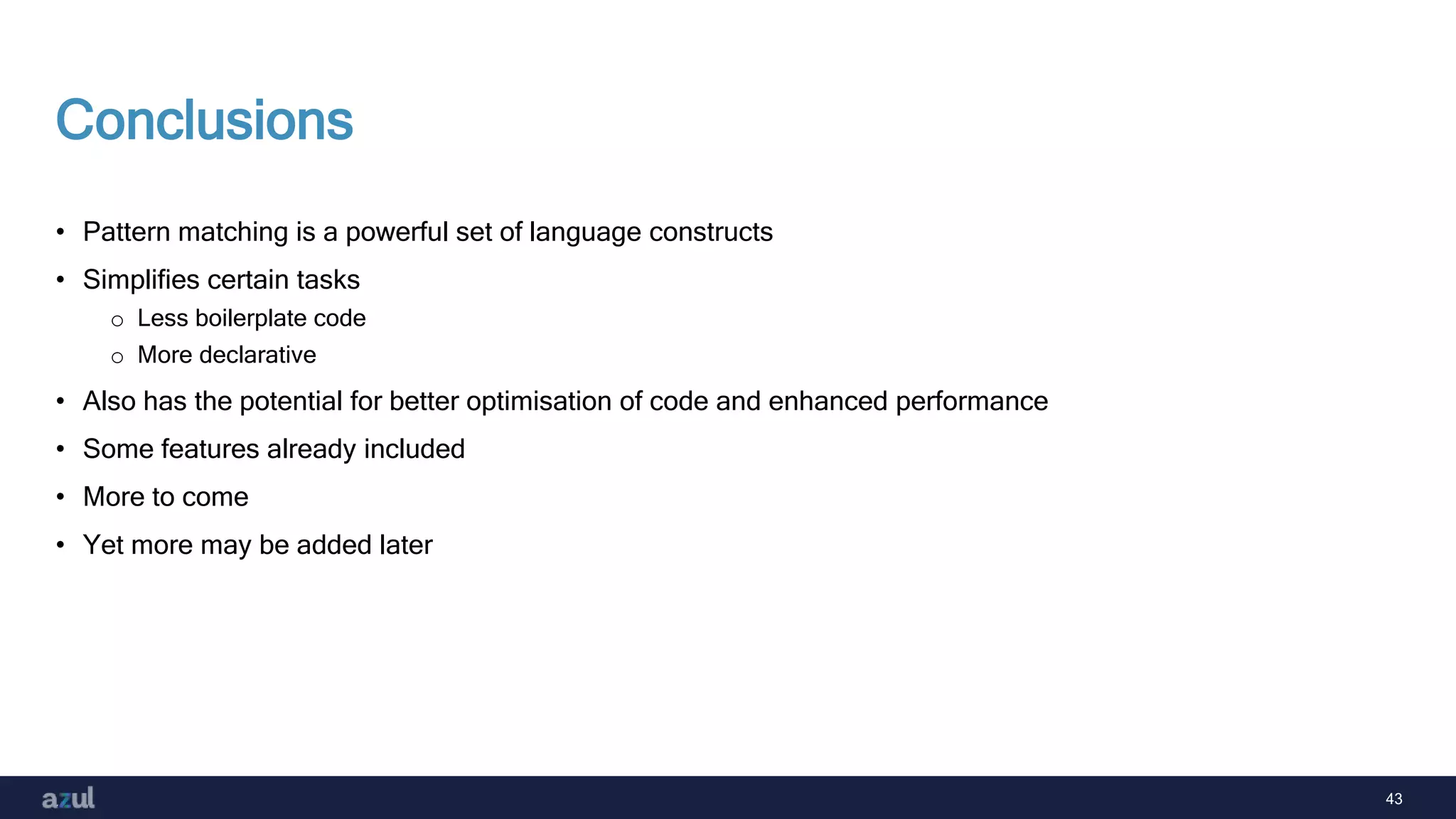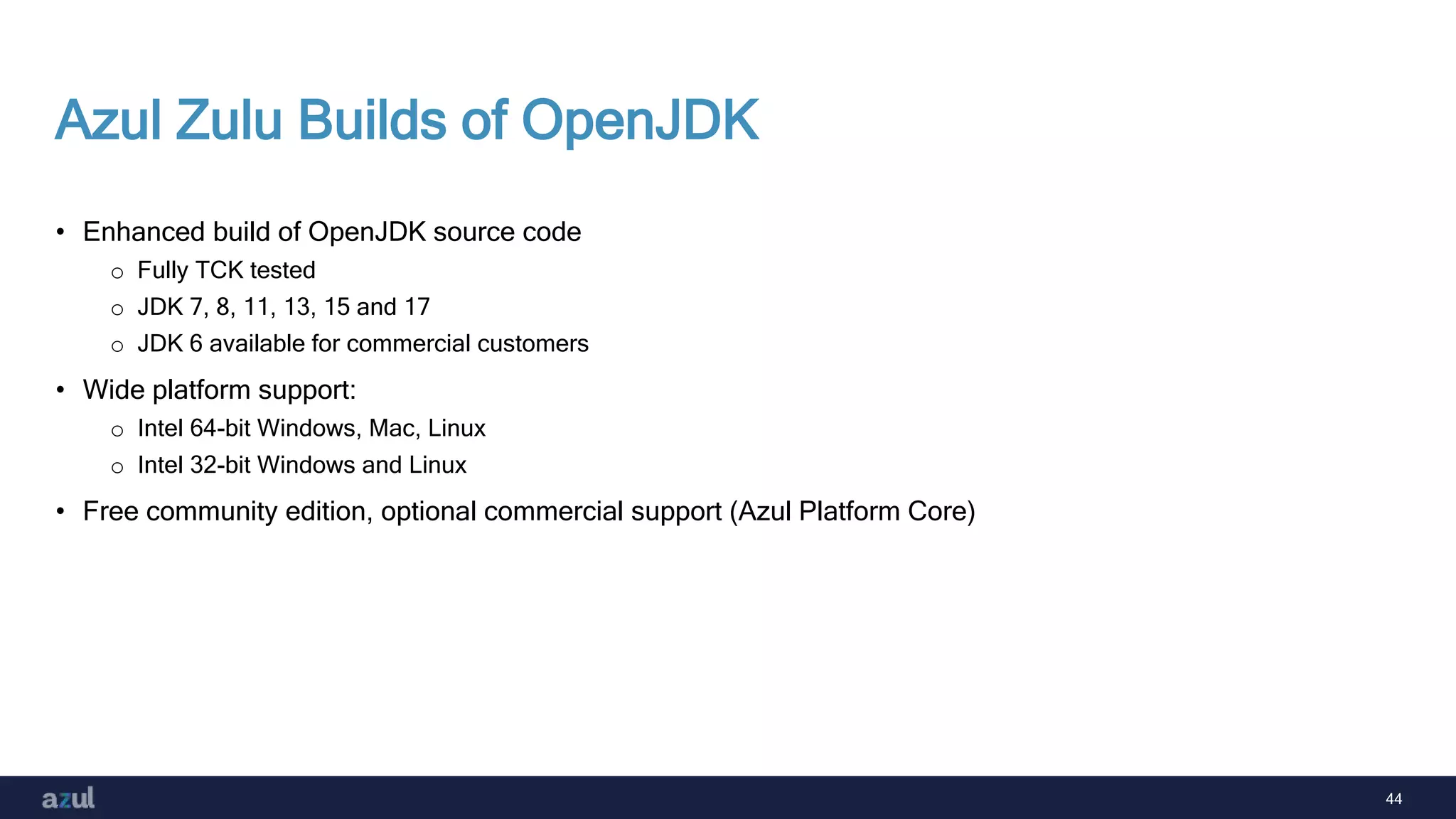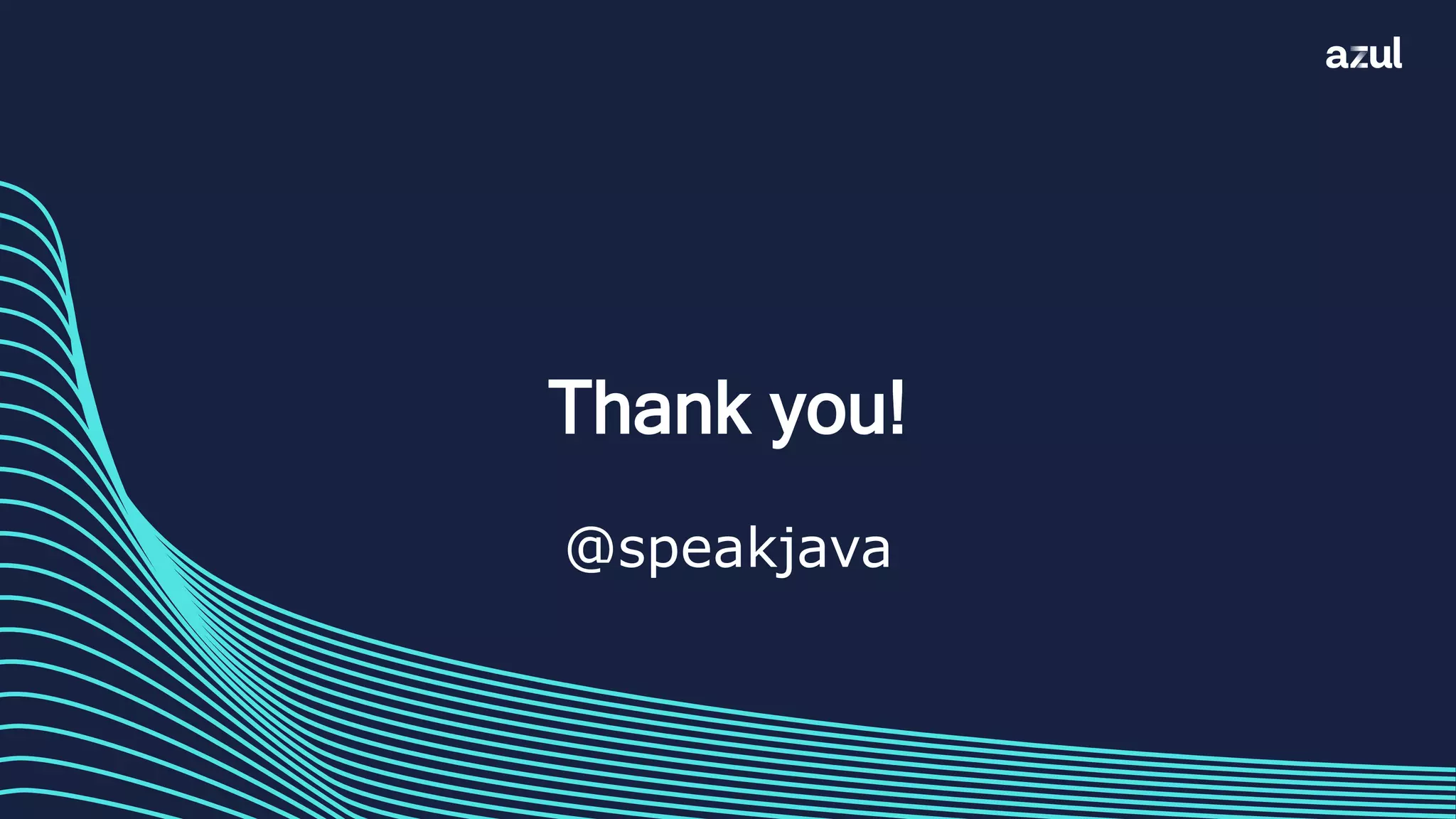The document discusses advancements in Java, particularly focusing on pattern matching and new language features introduced in recent Java versions. It covers the evolution of switch statements, the introduction of records, and enhancements like pattern matching for instanceof and switch constructs. The conclusions emphasize that pattern matching simplifies coding and improves performance, with more features expected in the future.
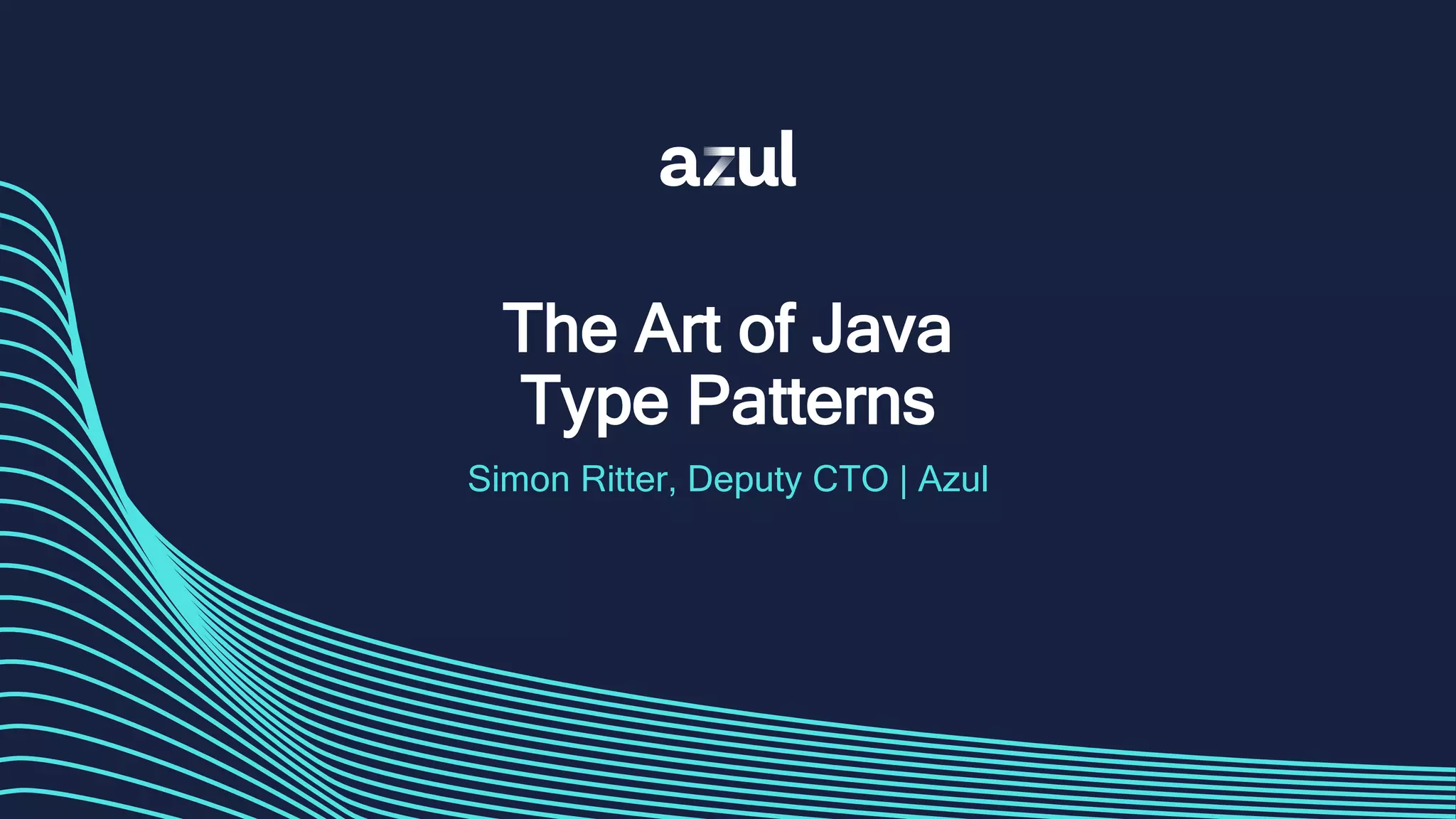
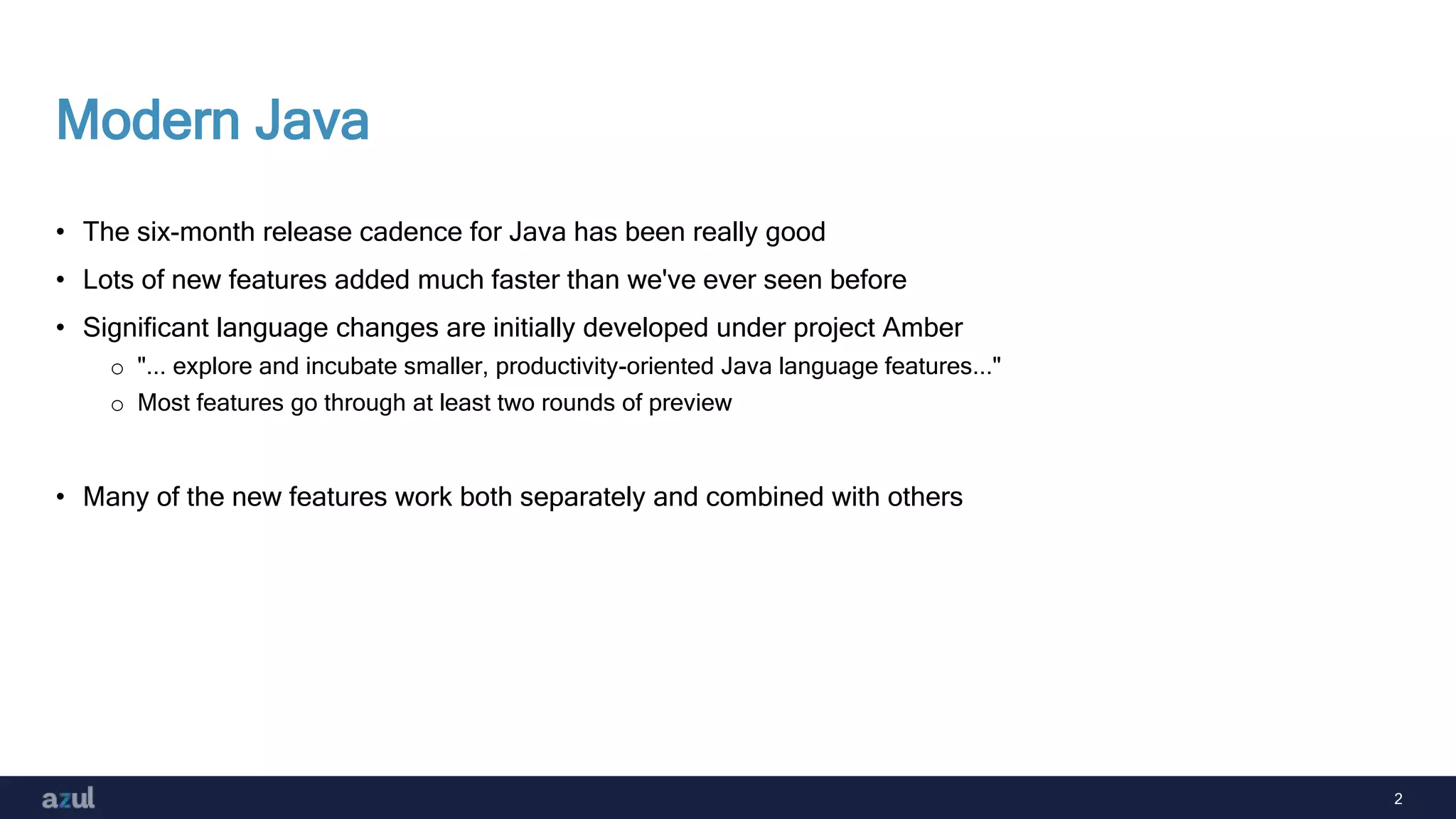
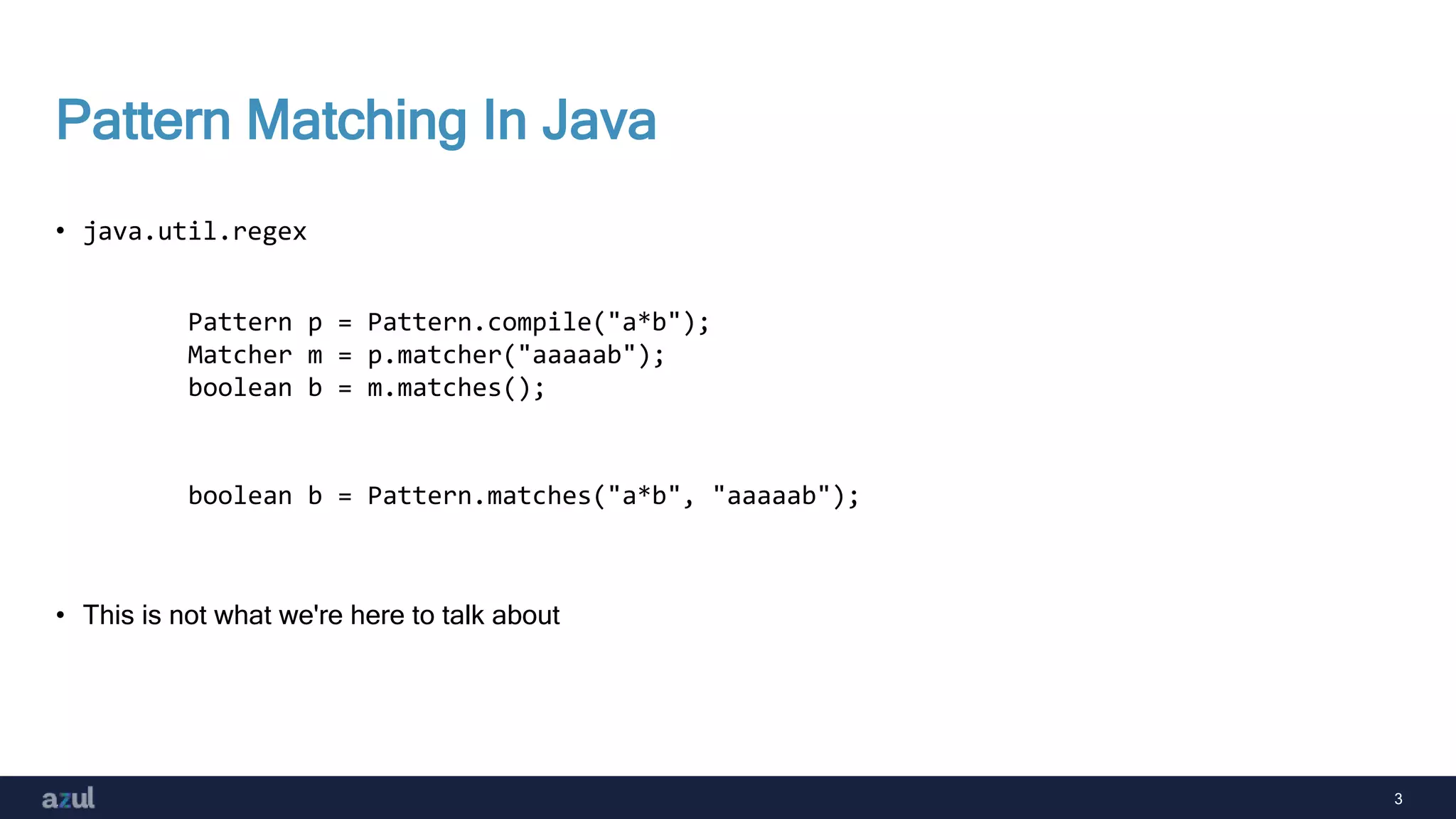
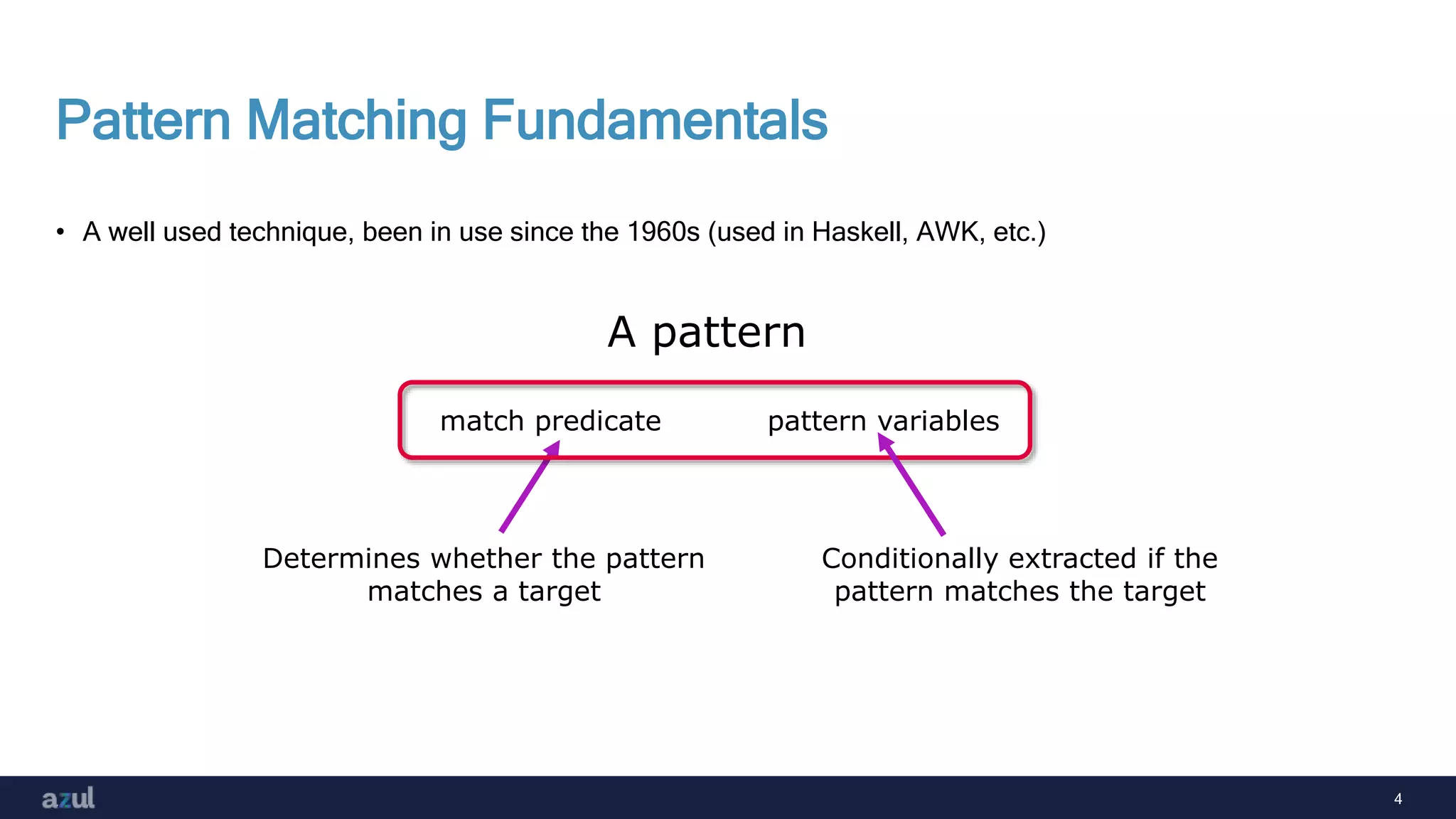
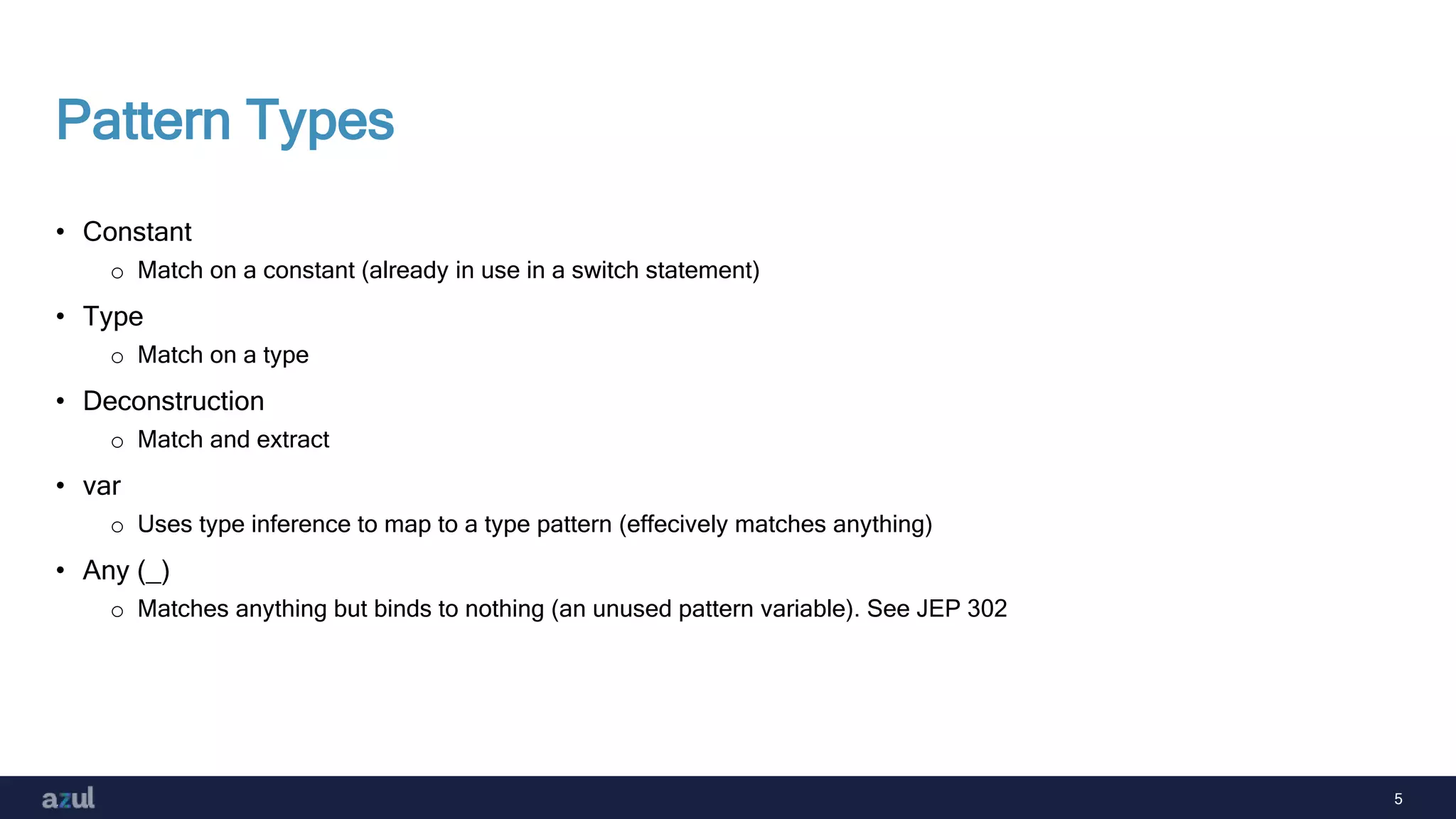

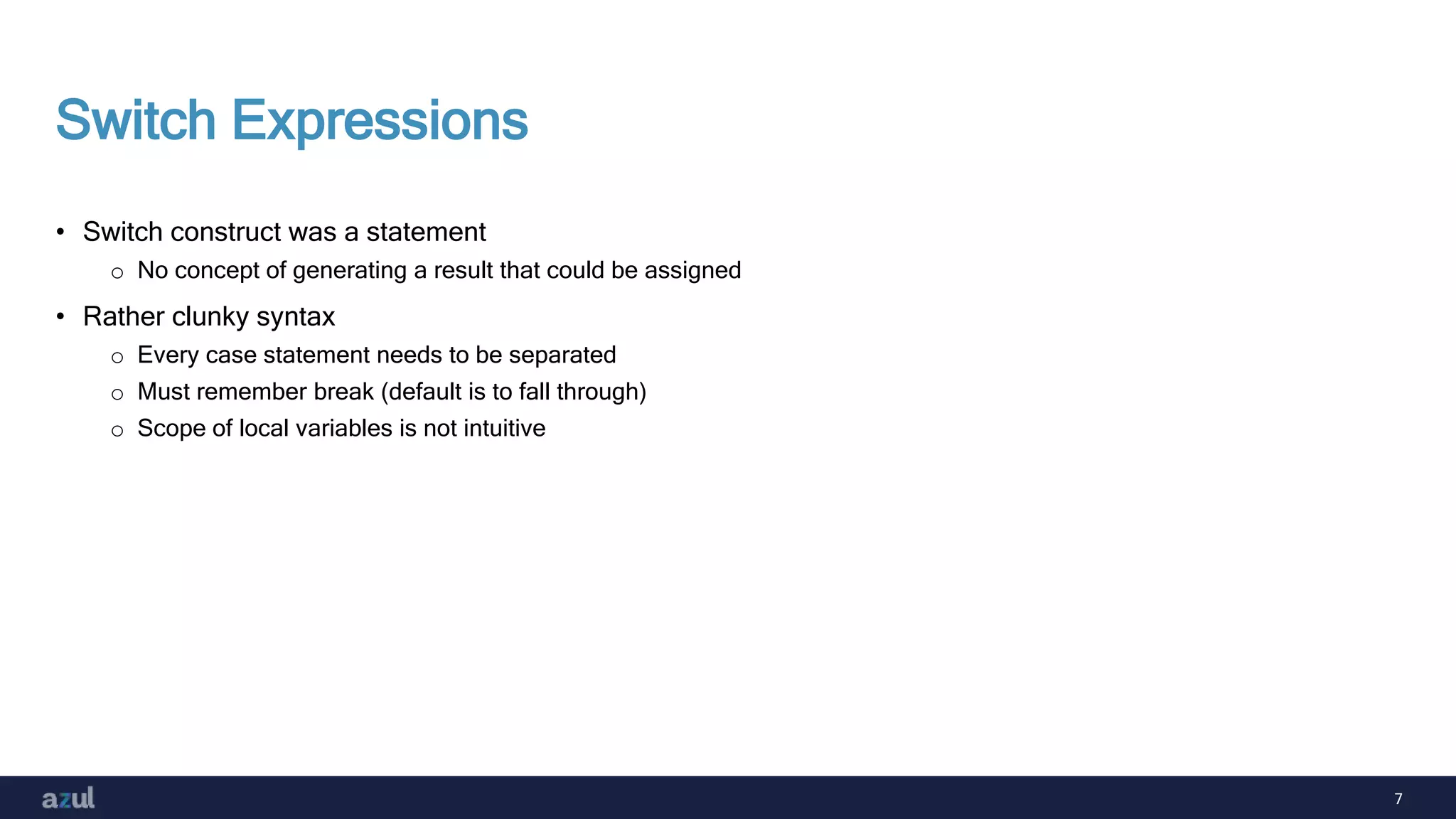
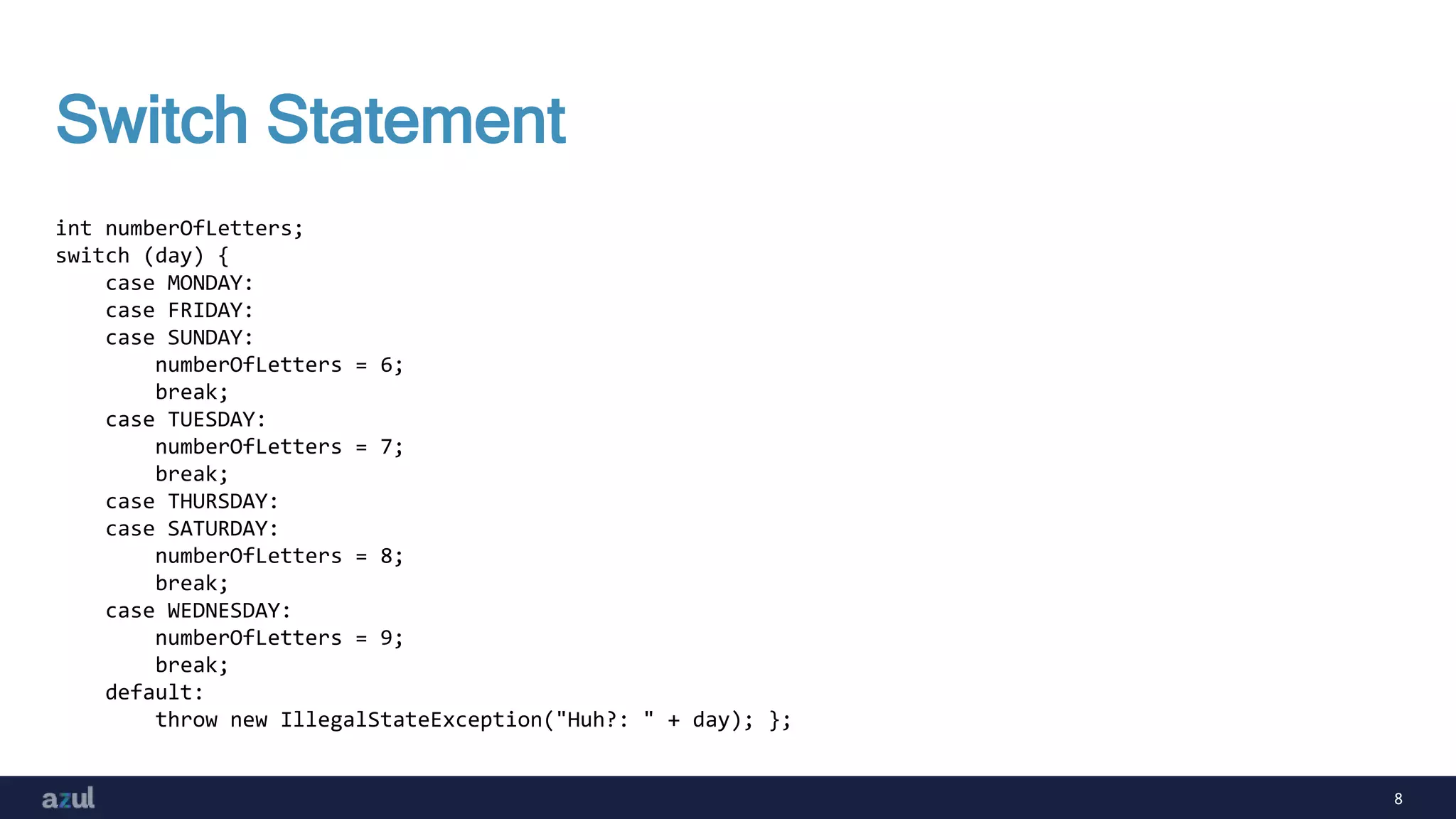
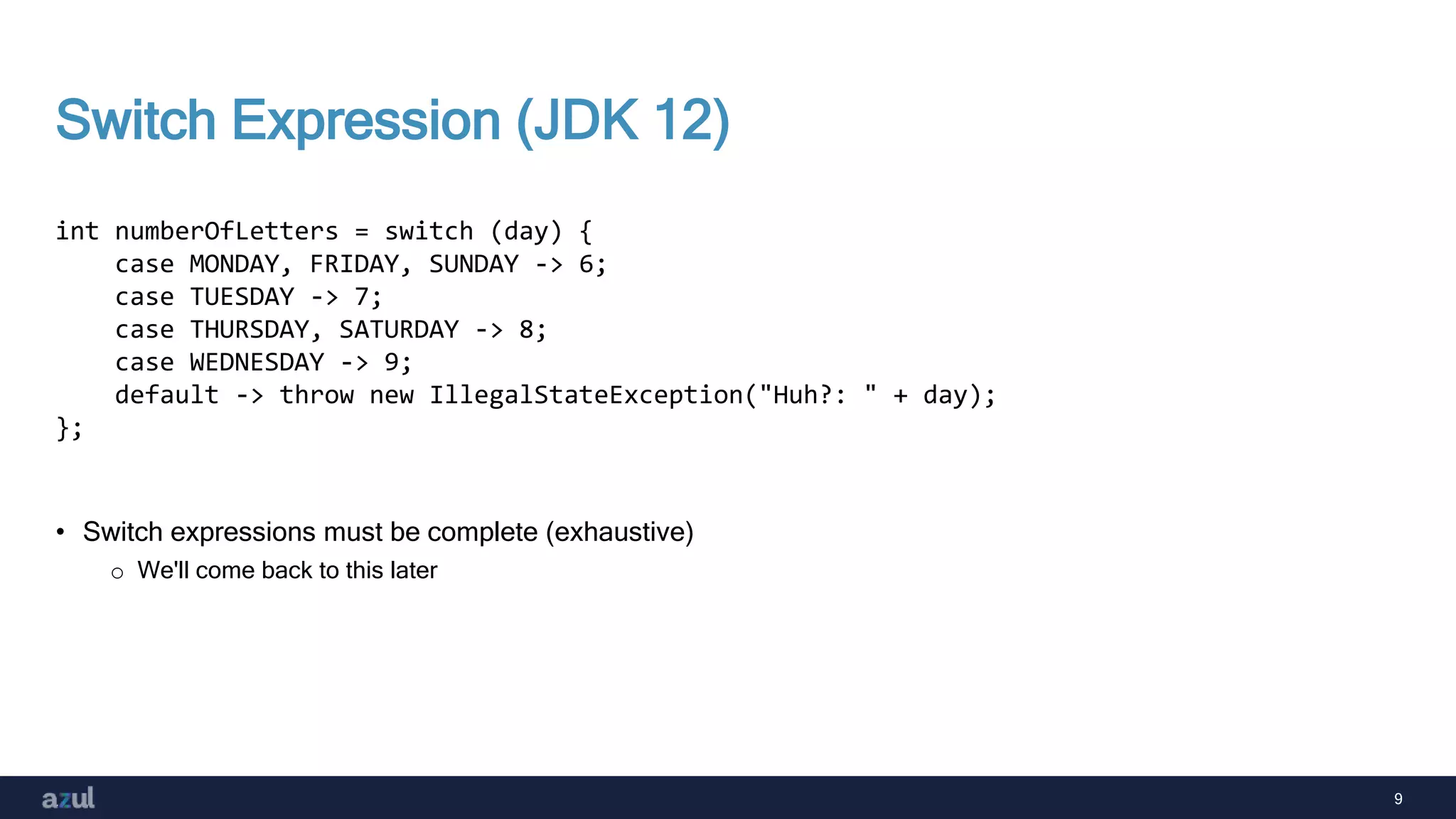
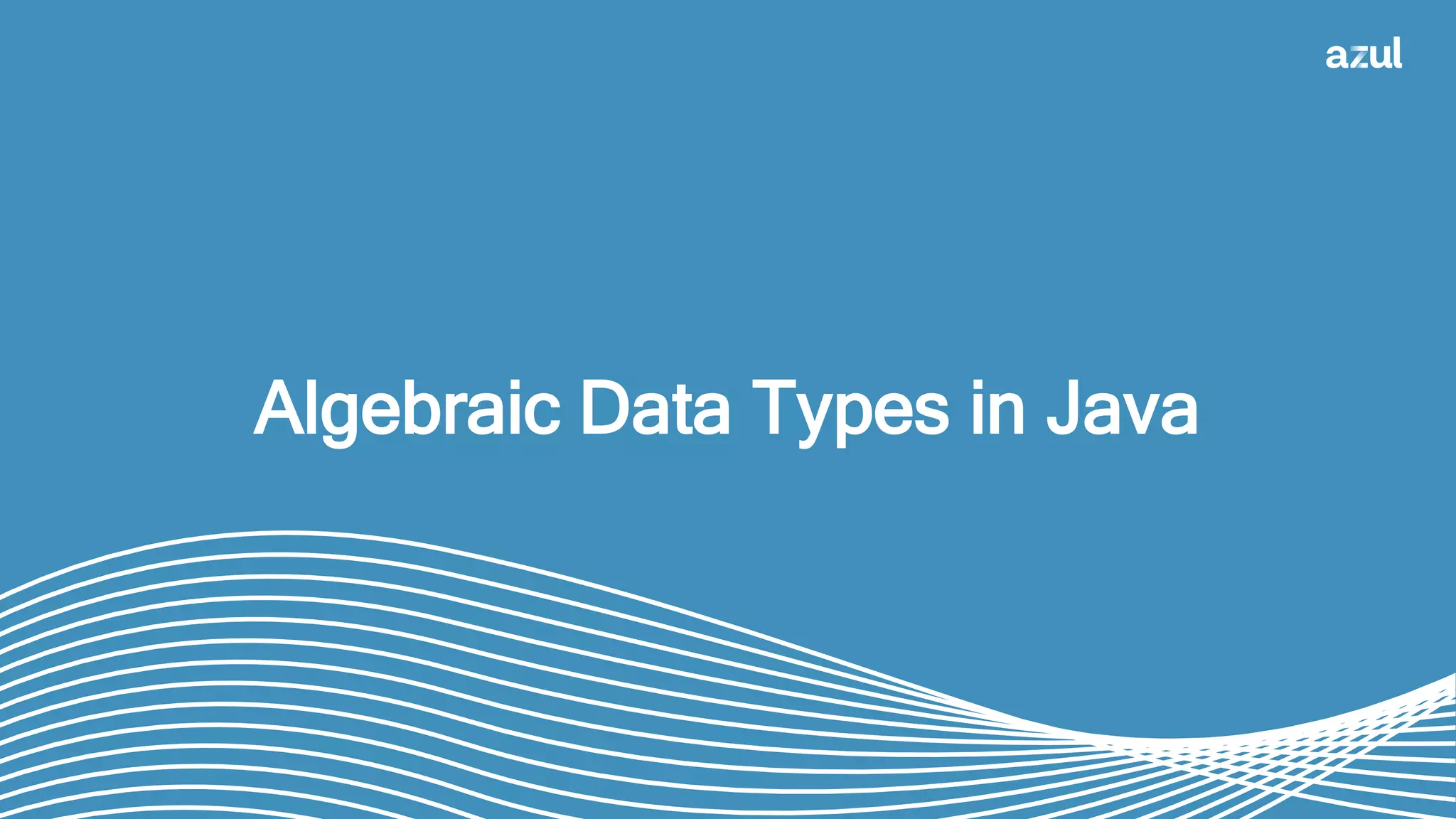
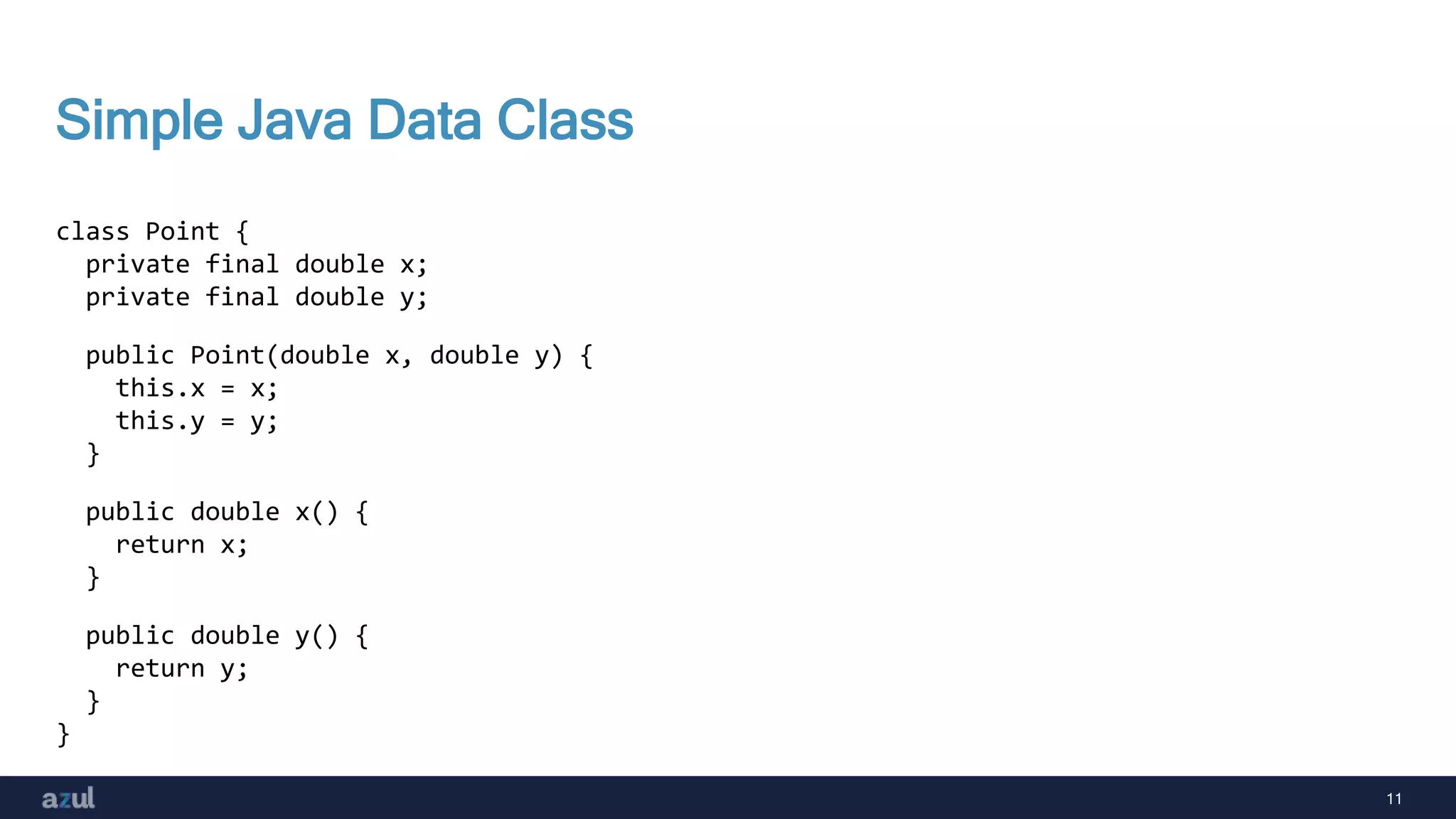
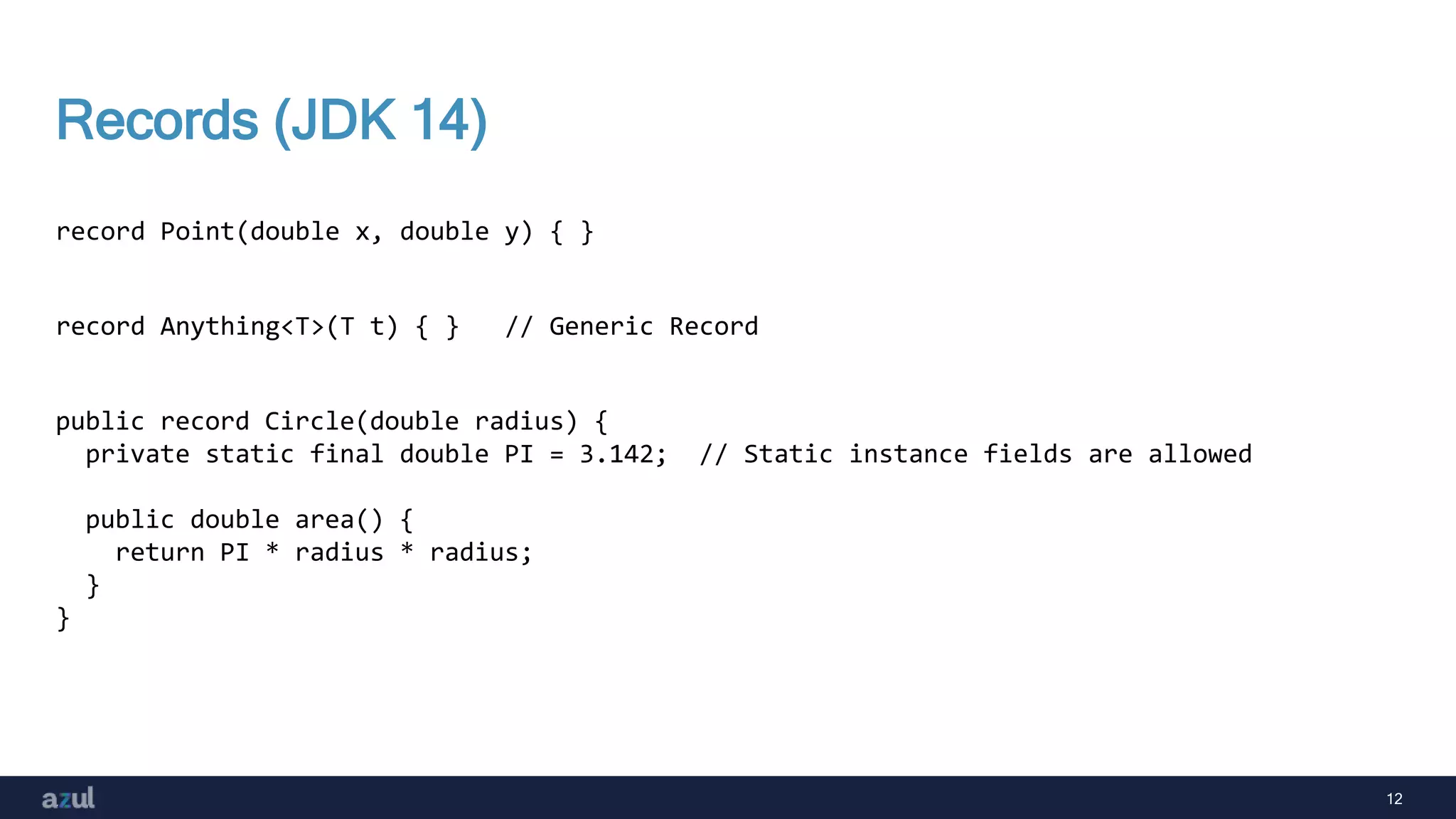
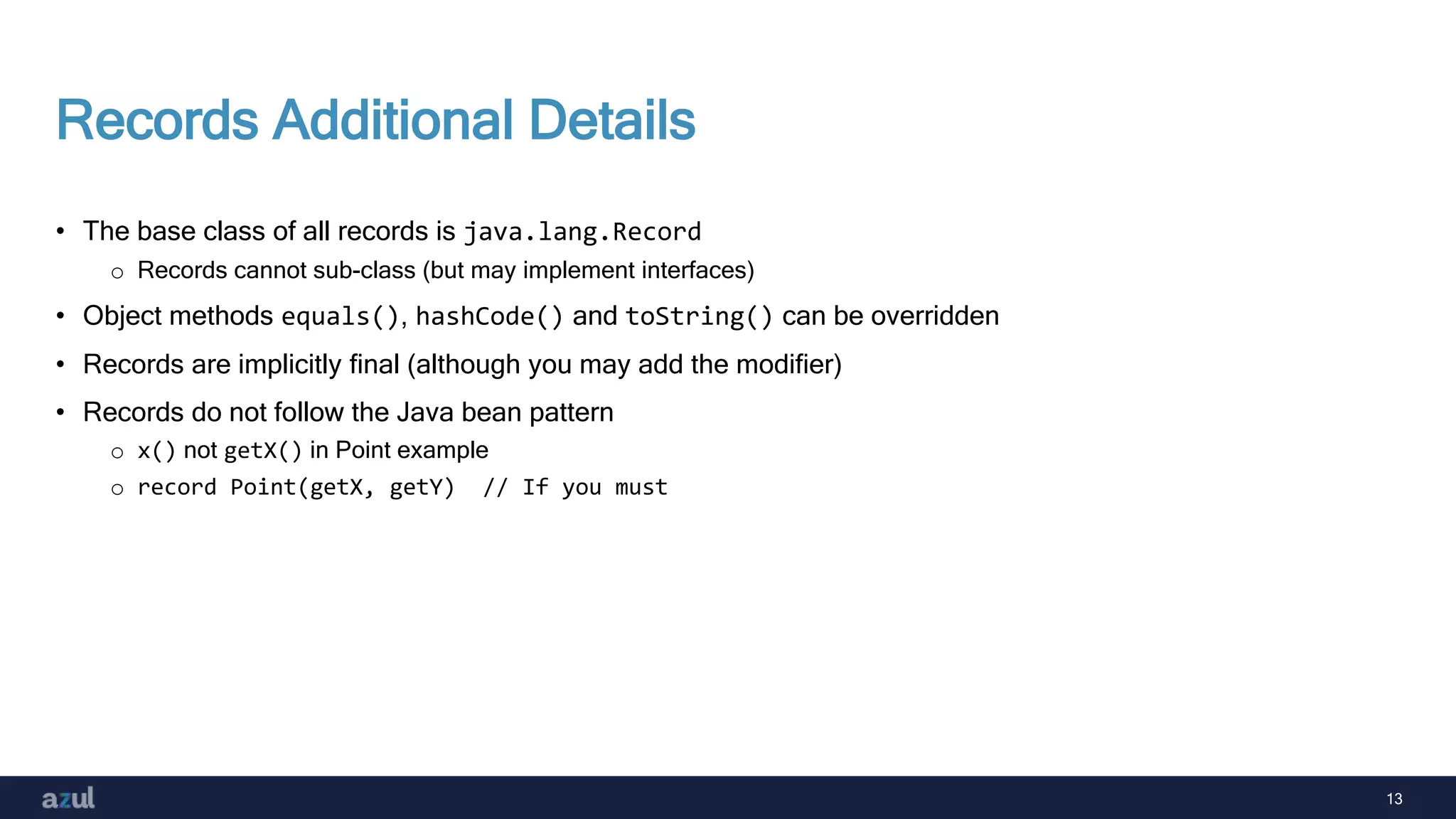
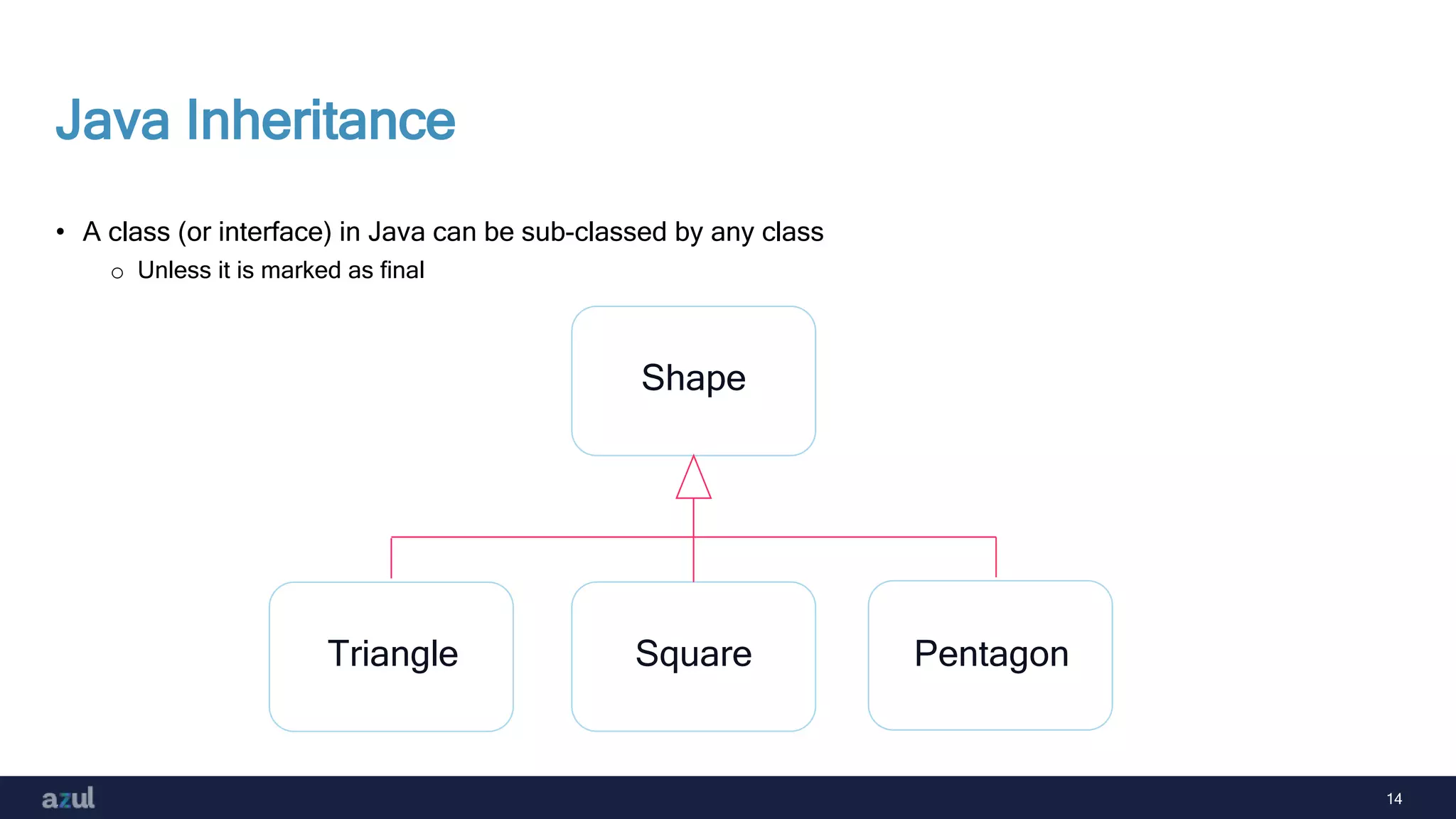
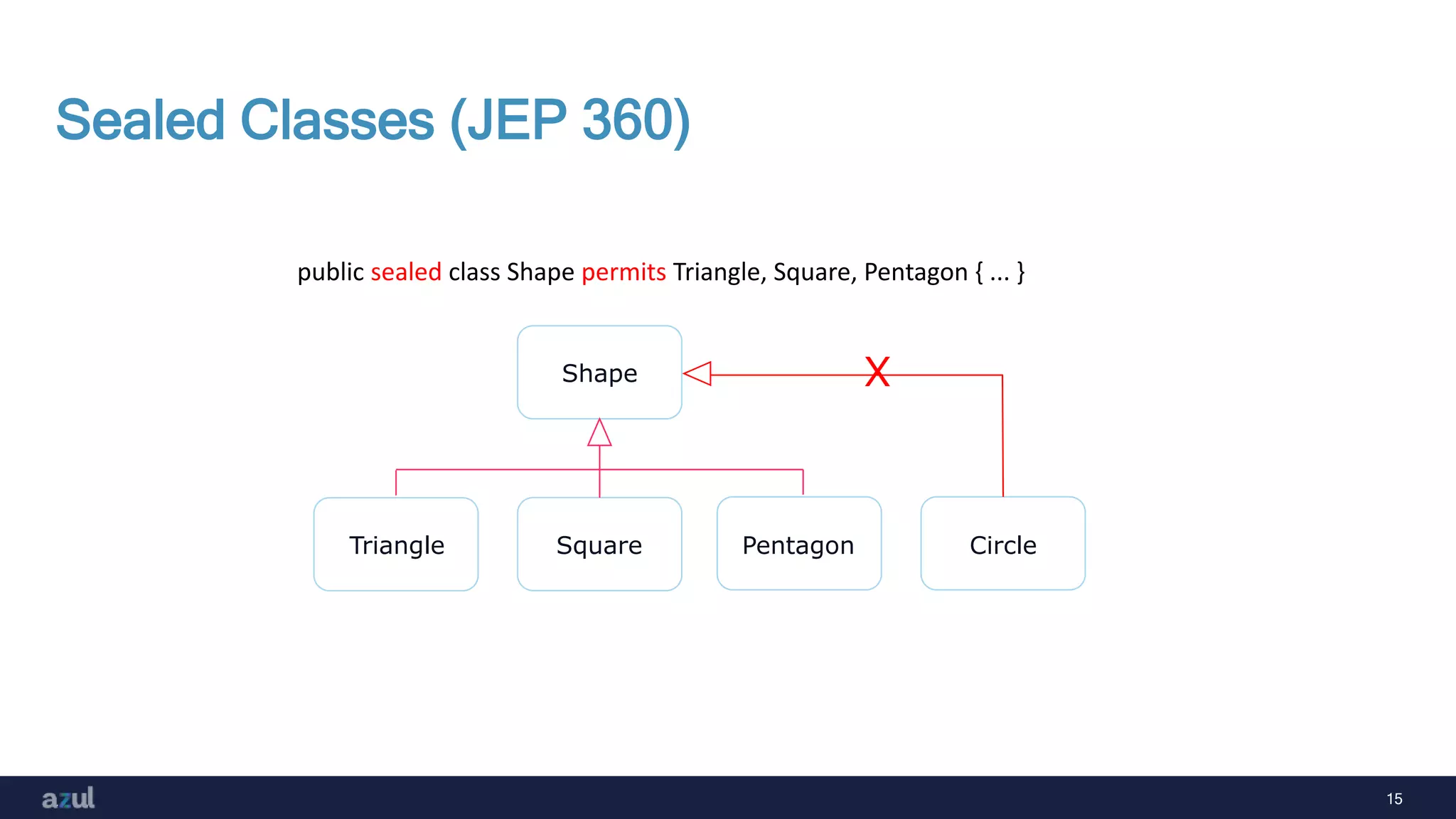
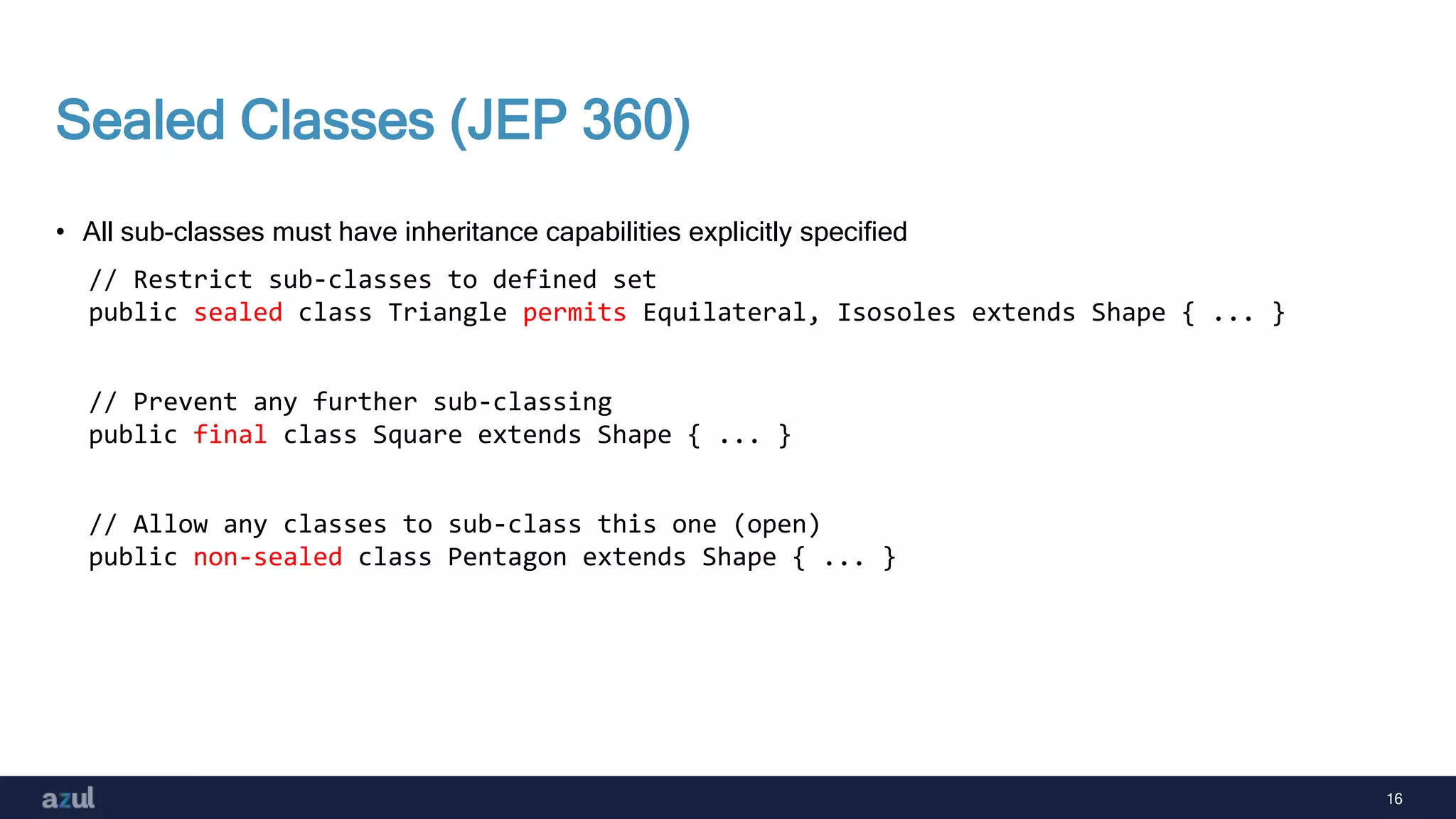
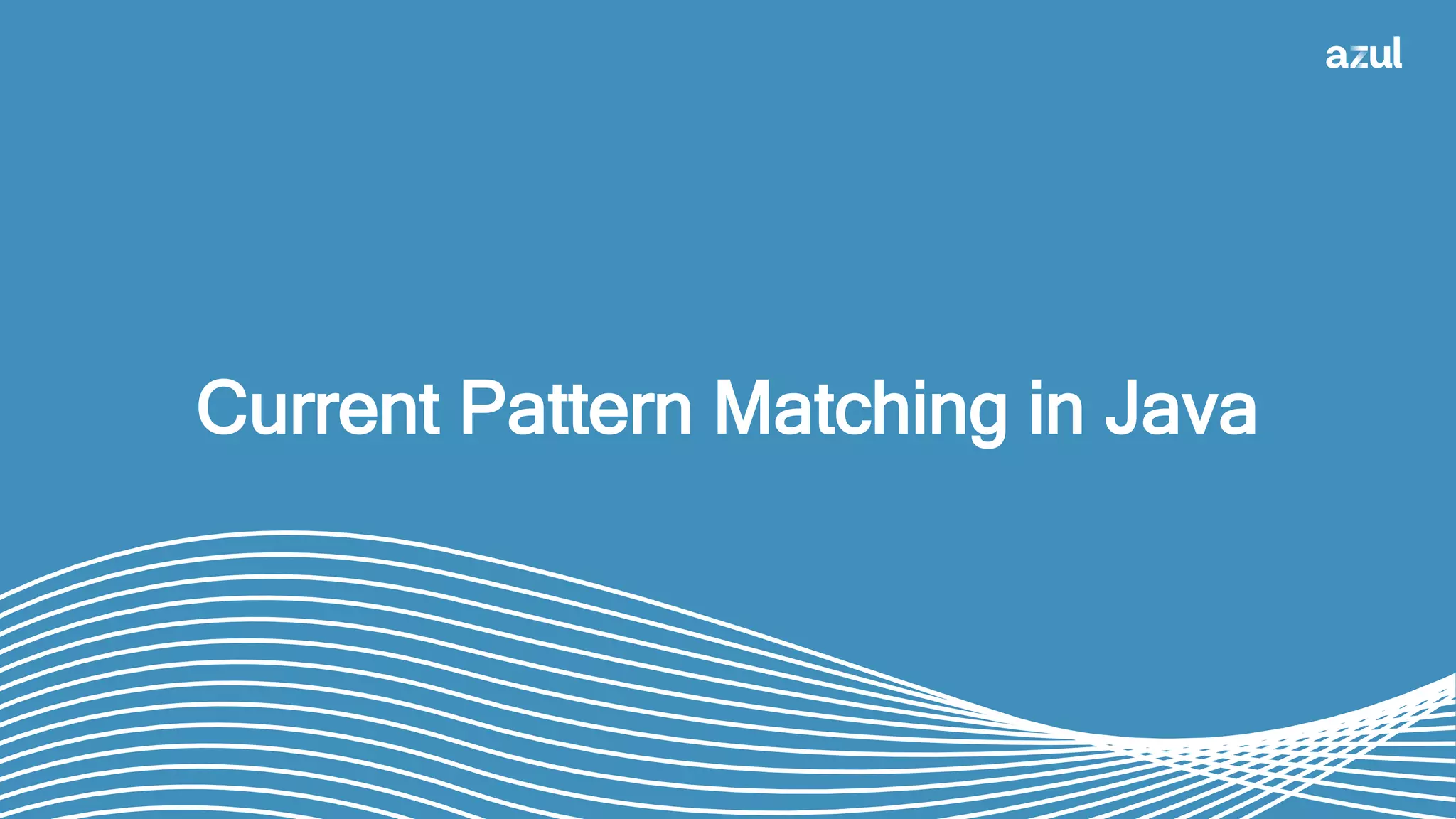
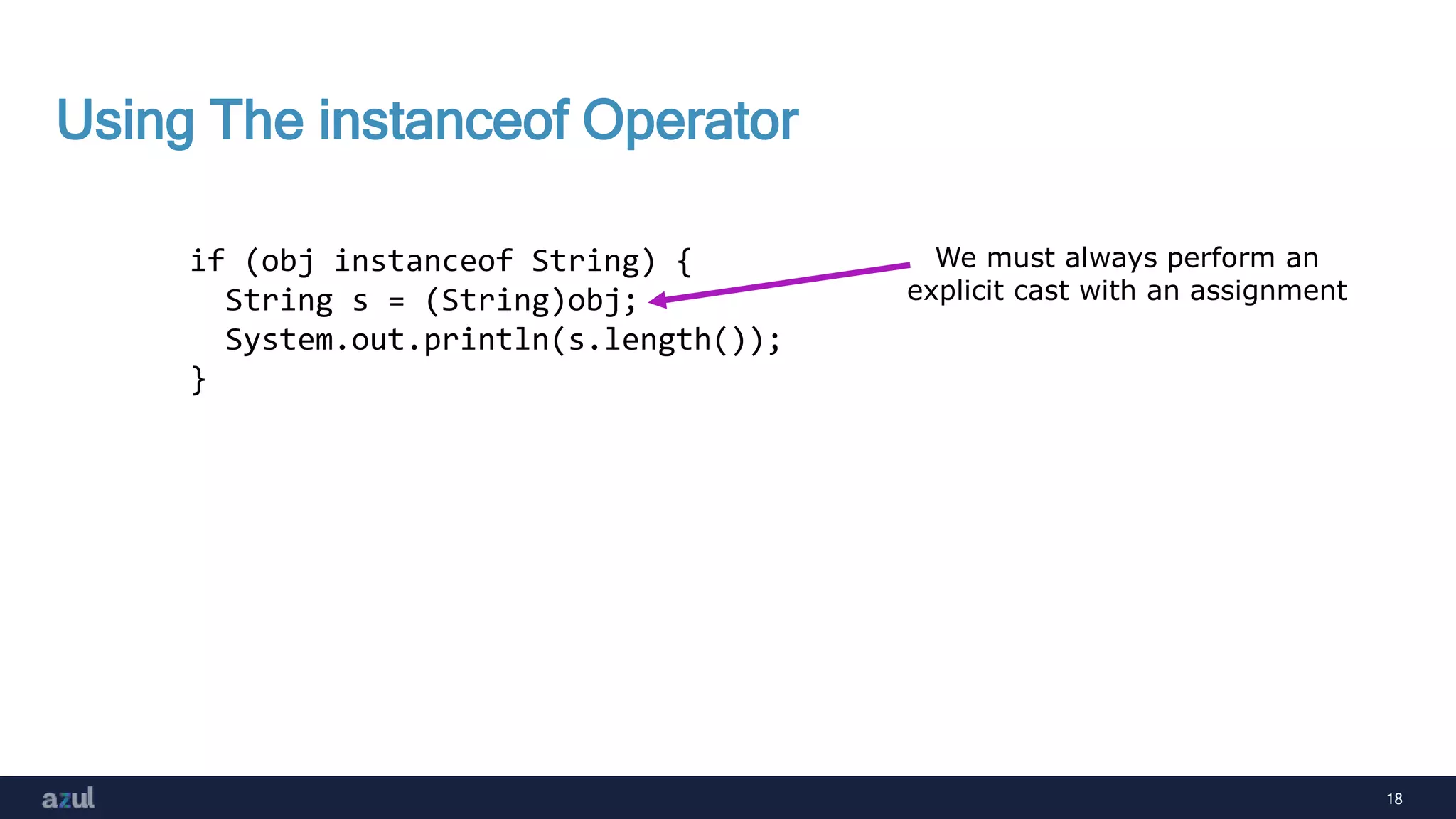
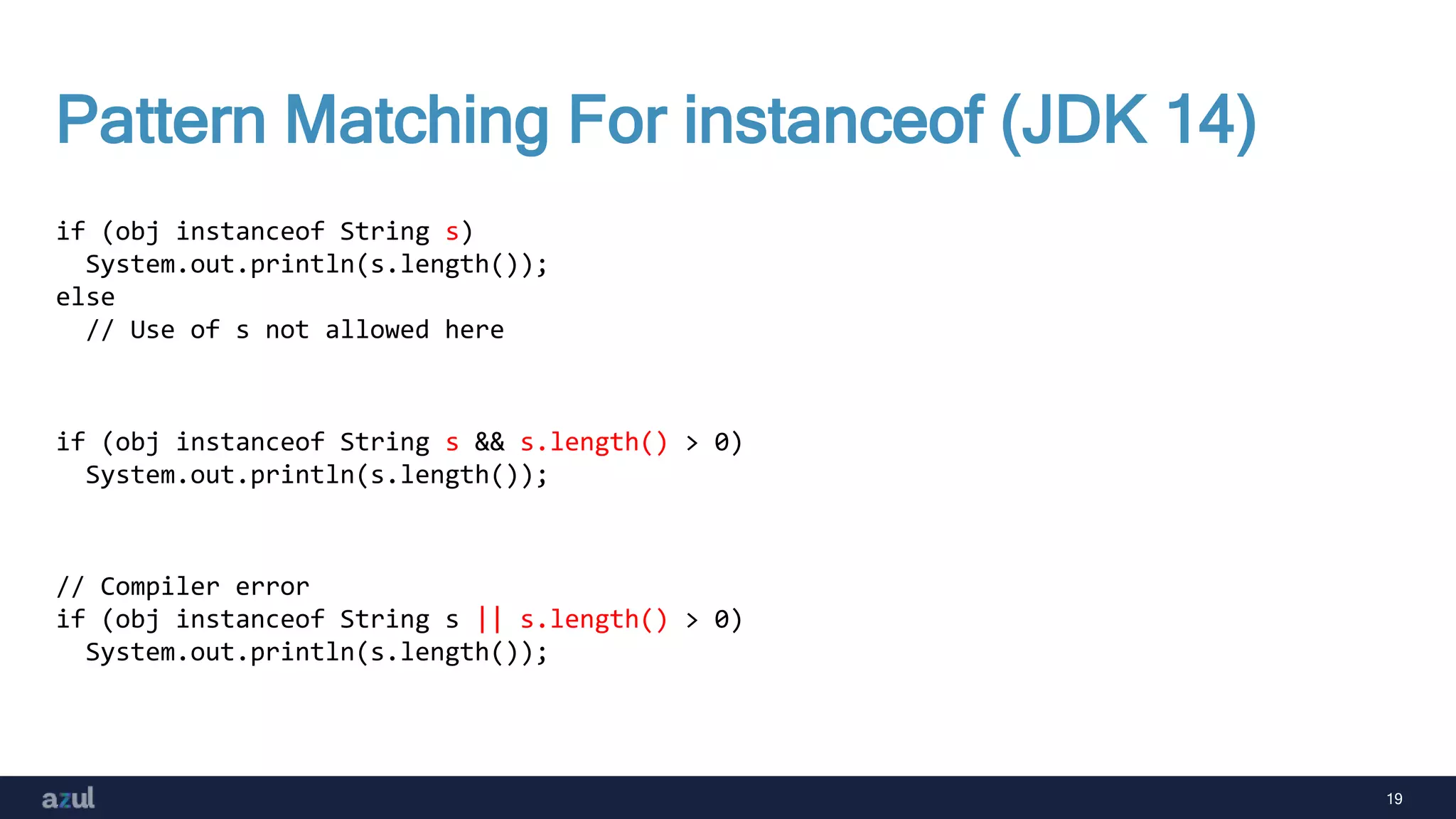
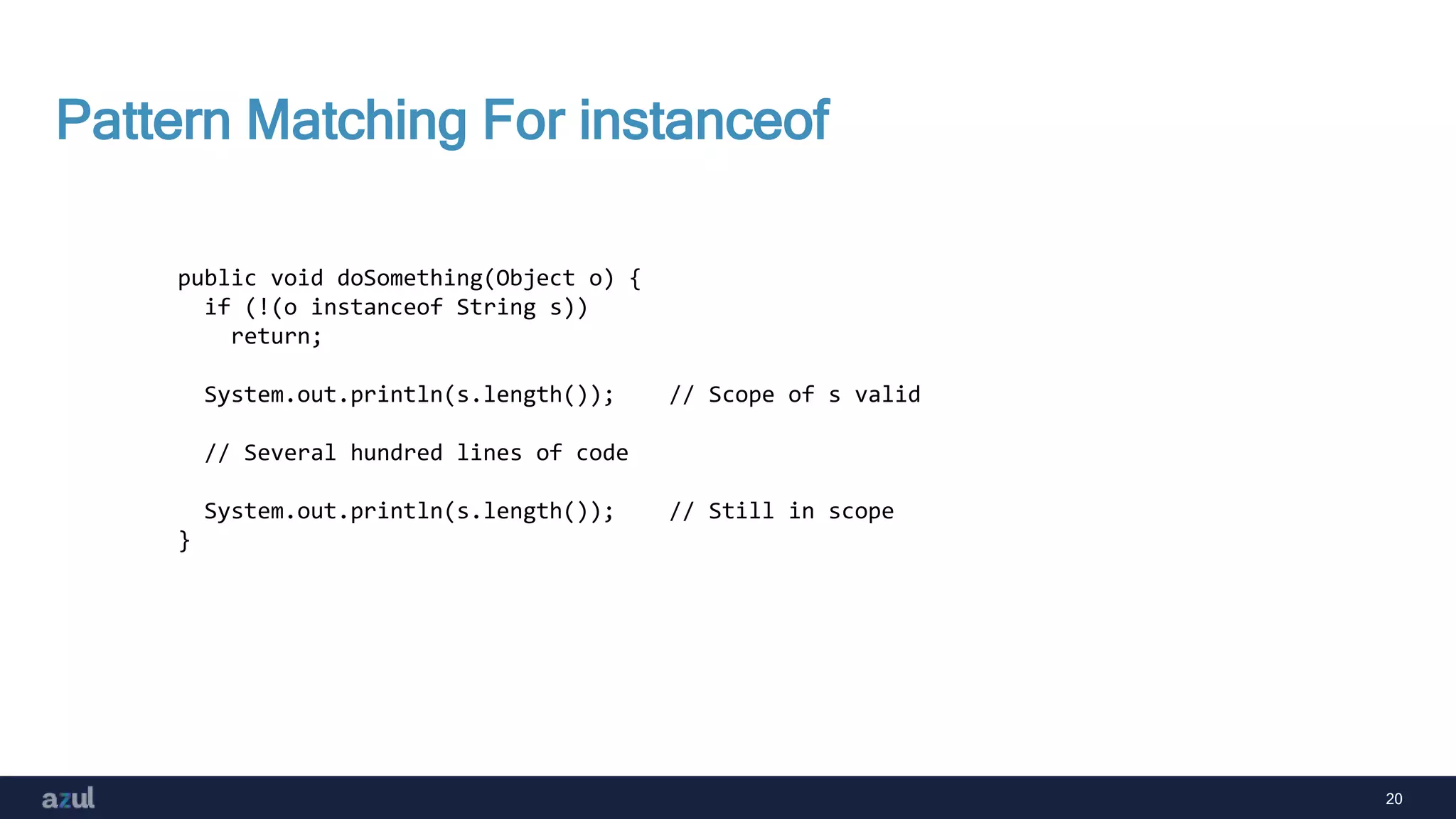
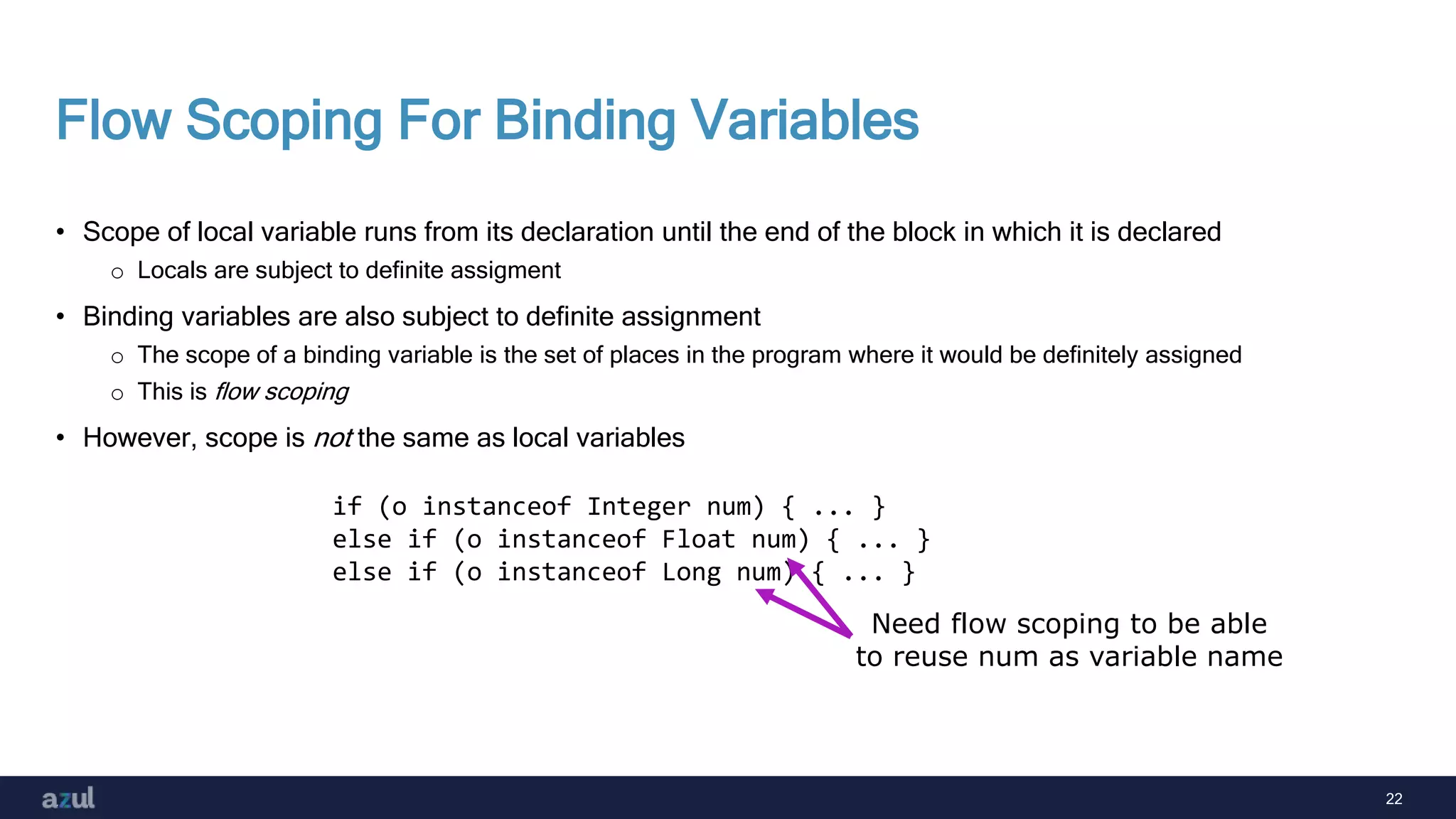
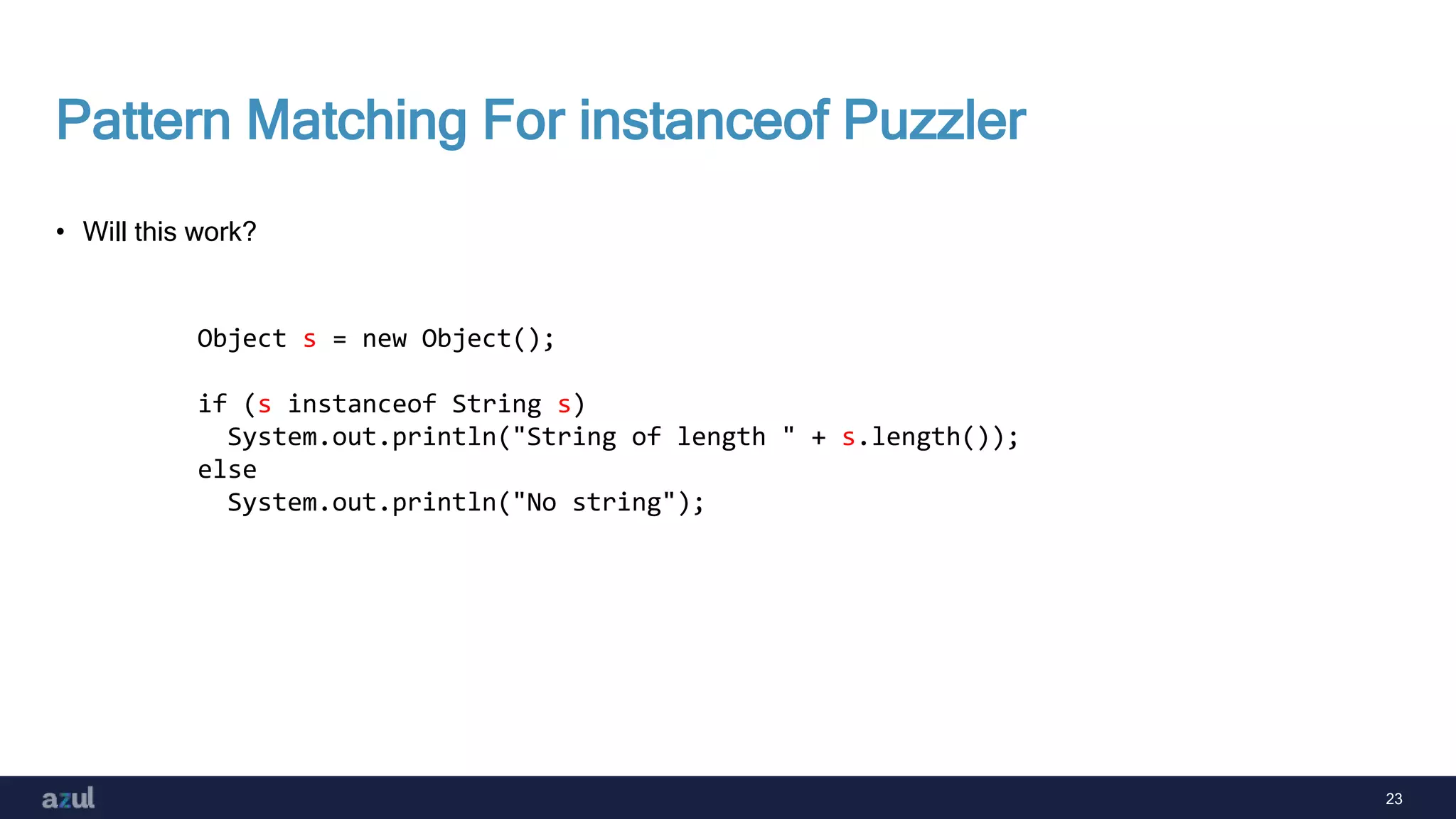
![25
Pattern Matching For switch
• Switch is limited on what types you can use (Integral values, Strings, enumerations)
• Expanded to allow type patterns to be matched
void typeTester(Object o) {
switch (o) {
case null -> System.out.println("Null type");
case String s -> System.out.println("String: " + s);
case Color c -> System.out.println("Color with RGB: " + c.getRGB());
case int[] ia -> System.out.println("Array of ints, length" + ia.length);
default -> System.out.println(o.toString());
}
}](https://image.slidesharecdn.com/patternsinjava-220425143332/75/The-Art-of-Java-Type-Patterns-23-2048.jpg)
![26
Pattern Matching For switch
• Null is special (and complicated)
• case null can be used in all switch statements and expressions
o If not included, it will be added by compiler at start (throwing NullPointerException)
void typeTester(Object o) {
switch (o) {
case String s -> System.out.println("String: " + s);
case Color c -> System.out.println("Color with RGB: " + c.getRGB());
case int[] ia -> System.out.println("Array of ints, length" + ia.length);
default -> System.out.println("Bad input!");
}
}](https://image.slidesharecdn.com/patternsinjava-220425143332/75/The-Art-of-Java-Type-Patterns-24-2048.jpg)
![27
Pattern Matching For switch
• Null is special (and complicated)
• case null can be used in all switch statements and expressions
o If not included, it will be added by compiler at start (throwing NullPointerException)
void typeTester(Object o) {
switch (o) {
case null -> throw new NullPointerException(); // Added by compiler
case String s -> System.out.println("String: " + s);
case Color c -> System.out.println("Color with RGB: " + c.getRGB());
case int[] ia -> System.out.println("Array of ints, length" + ia.length);
default -> System.out.println("Bad input!");
}
}](https://image.slidesharecdn.com/patternsinjava-220425143332/75/The-Art-of-Java-Type-Patterns-25-2048.jpg)
![28
Pattern Matching For switch
• Null is special (and complicated)
• case null can be used in all switch statements and expressions
o If not included, it will be added by compiler at start (throwing NullPointerException)
void typeTester(Object o) {
switch (o) {
case String s -> System.out.println("String: " + s);
case Color c -> System.out.println("Color with RGB: " + c.getRGB());
case int[] ia -> System.out.println("Array of ints, length" + ia.length);
null, default -> System.out.println("Bad input!"); // No NullPointerException
}
}](https://image.slidesharecdn.com/patternsinjava-220425143332/75/The-Art-of-Java-Type-Patterns-26-2048.jpg)
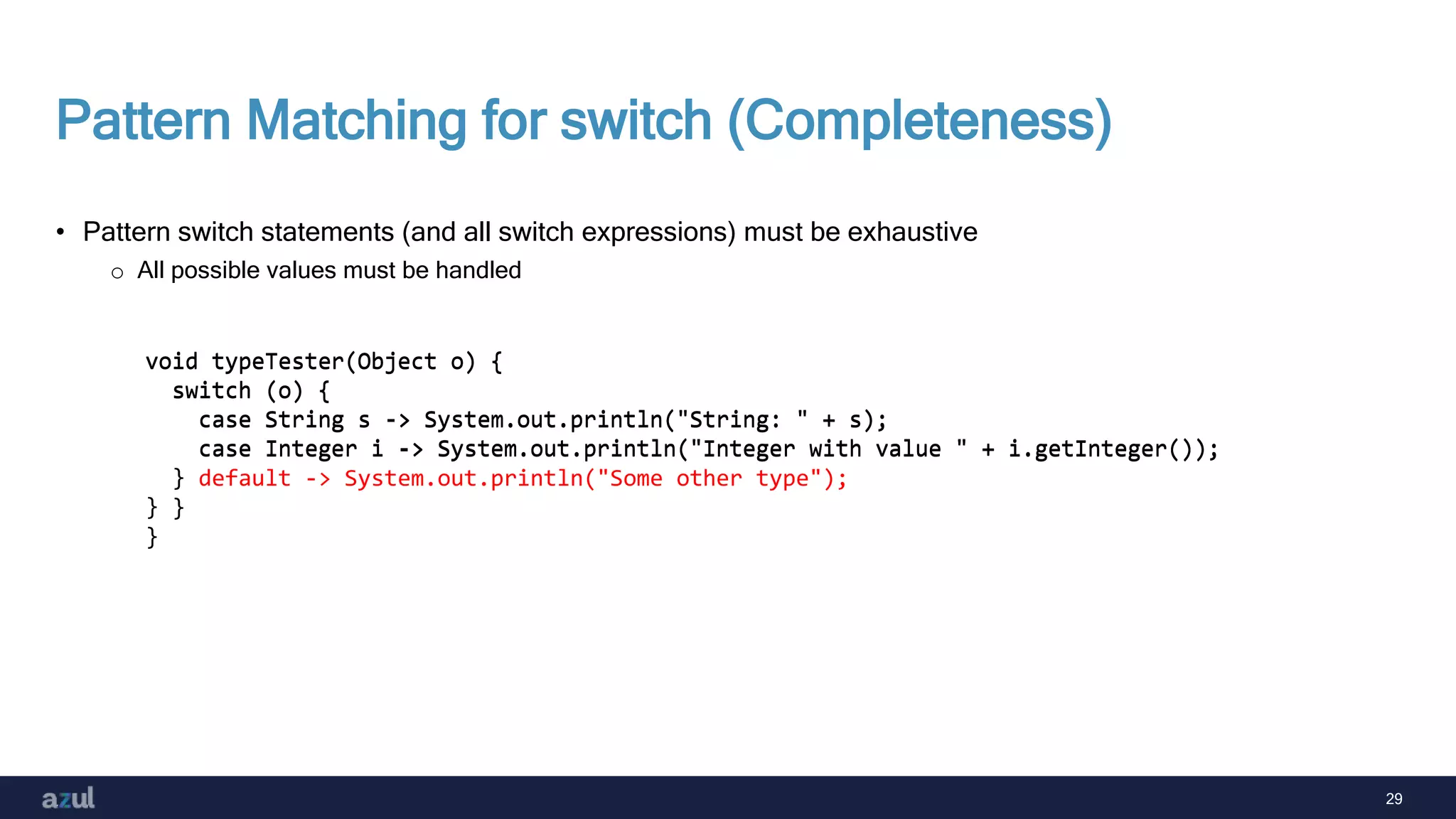
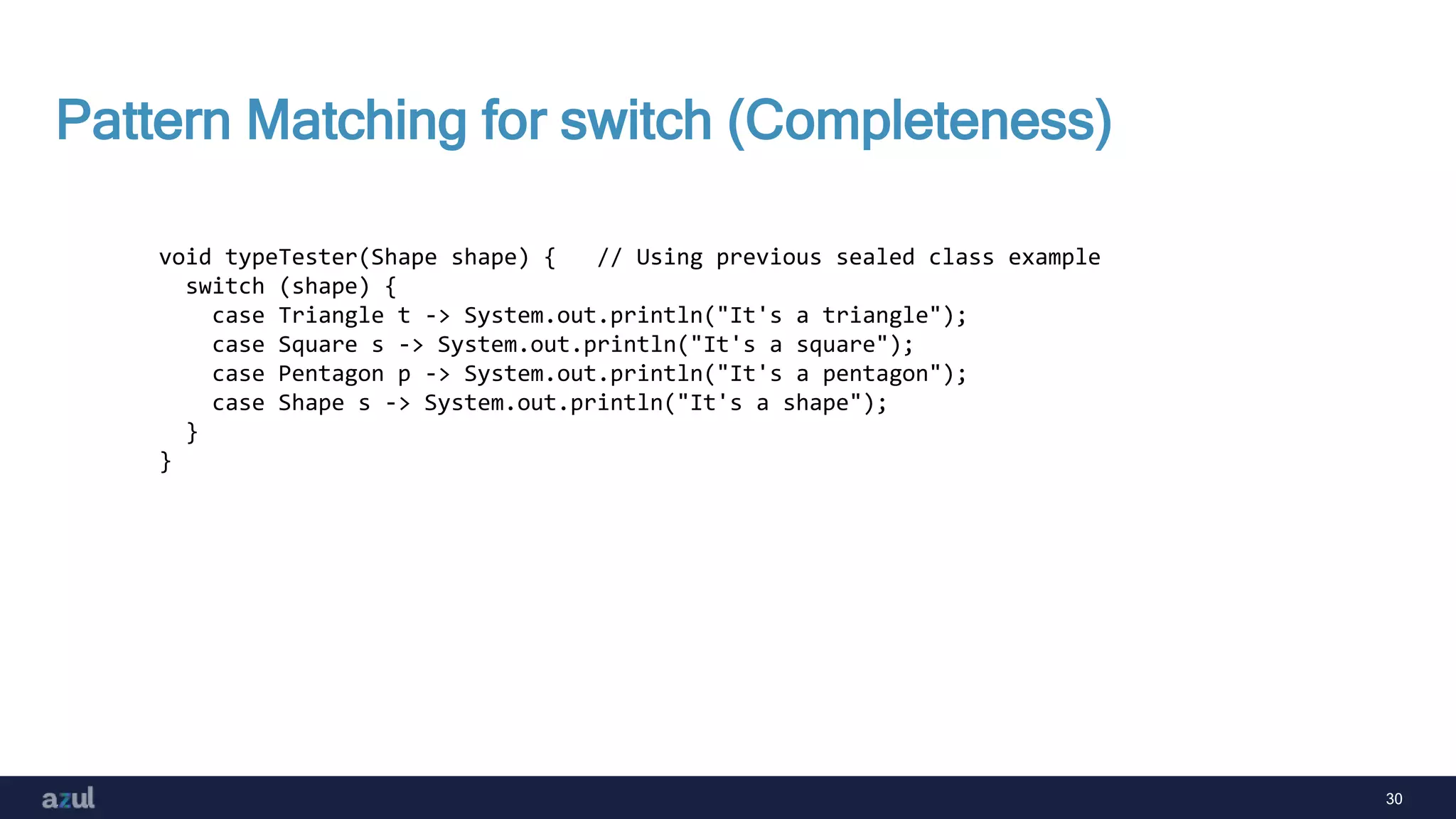
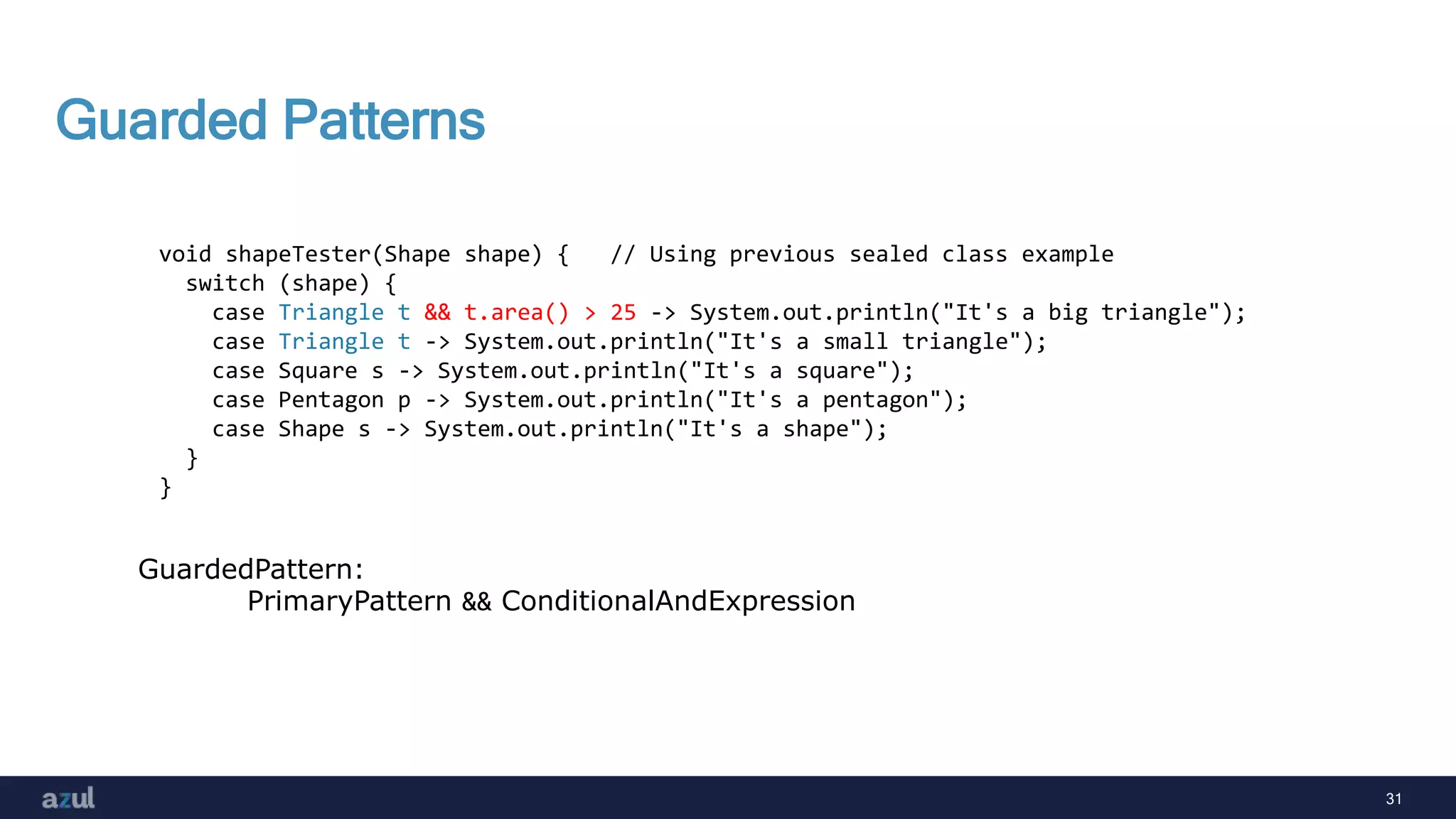
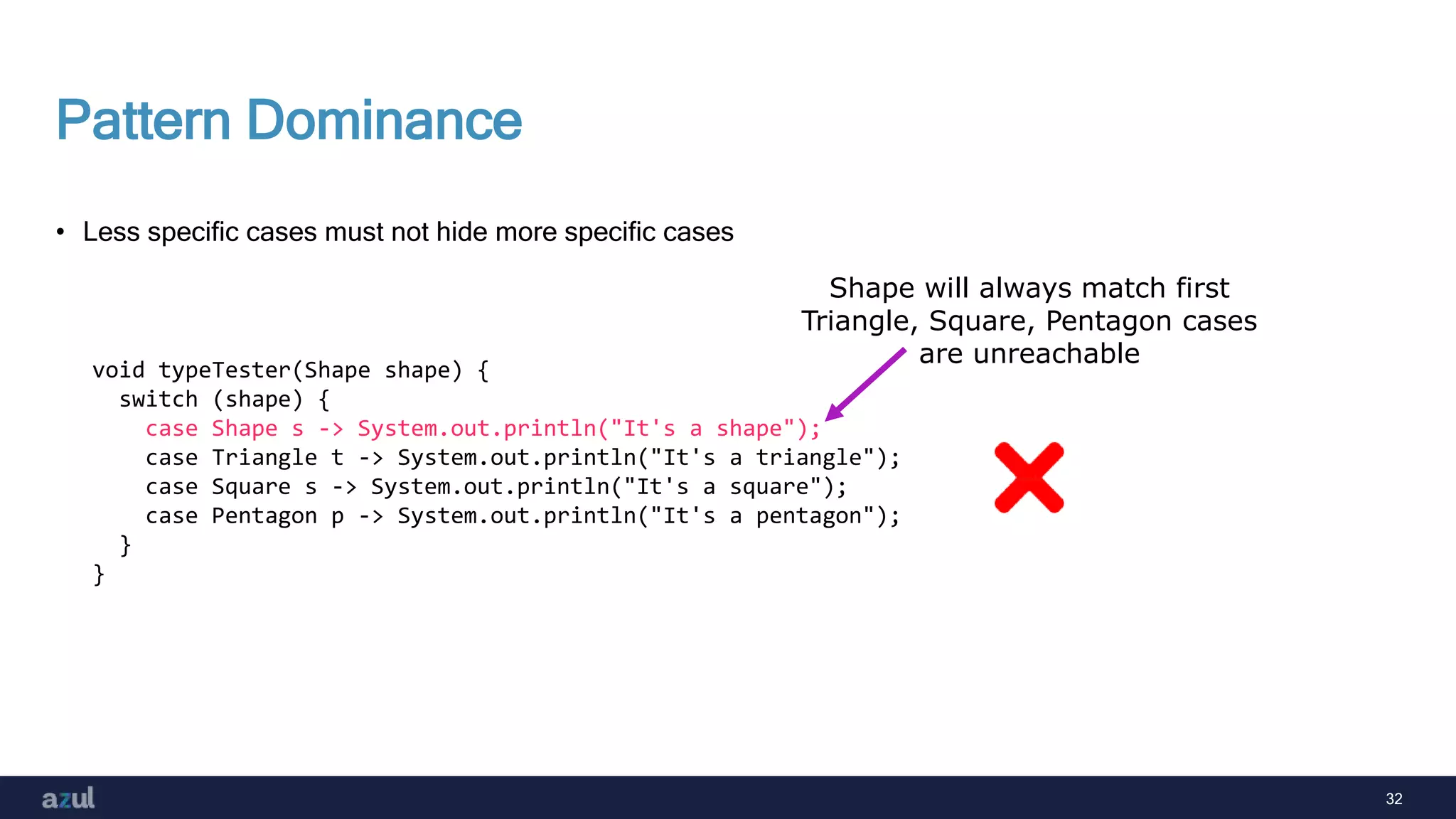
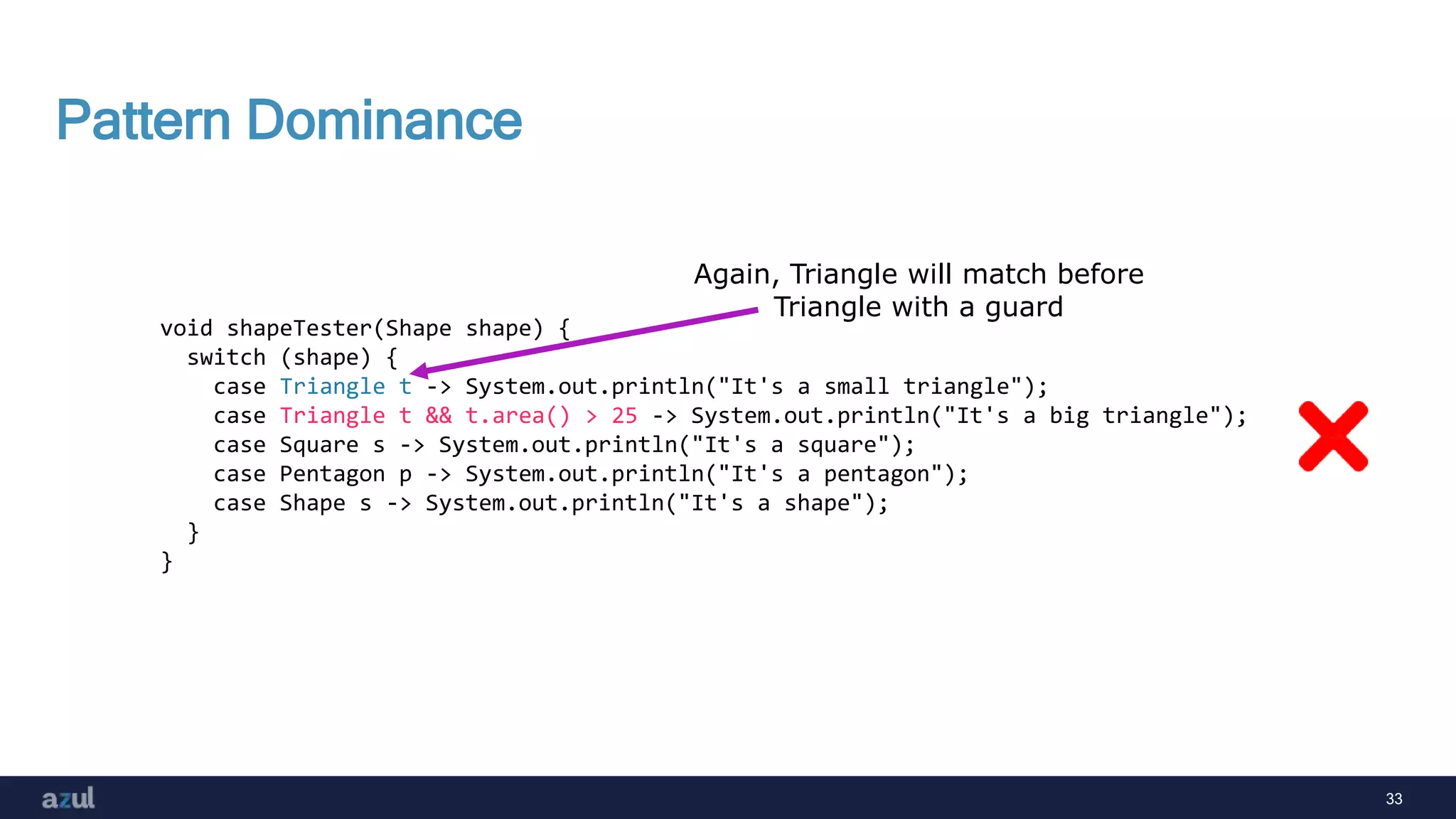
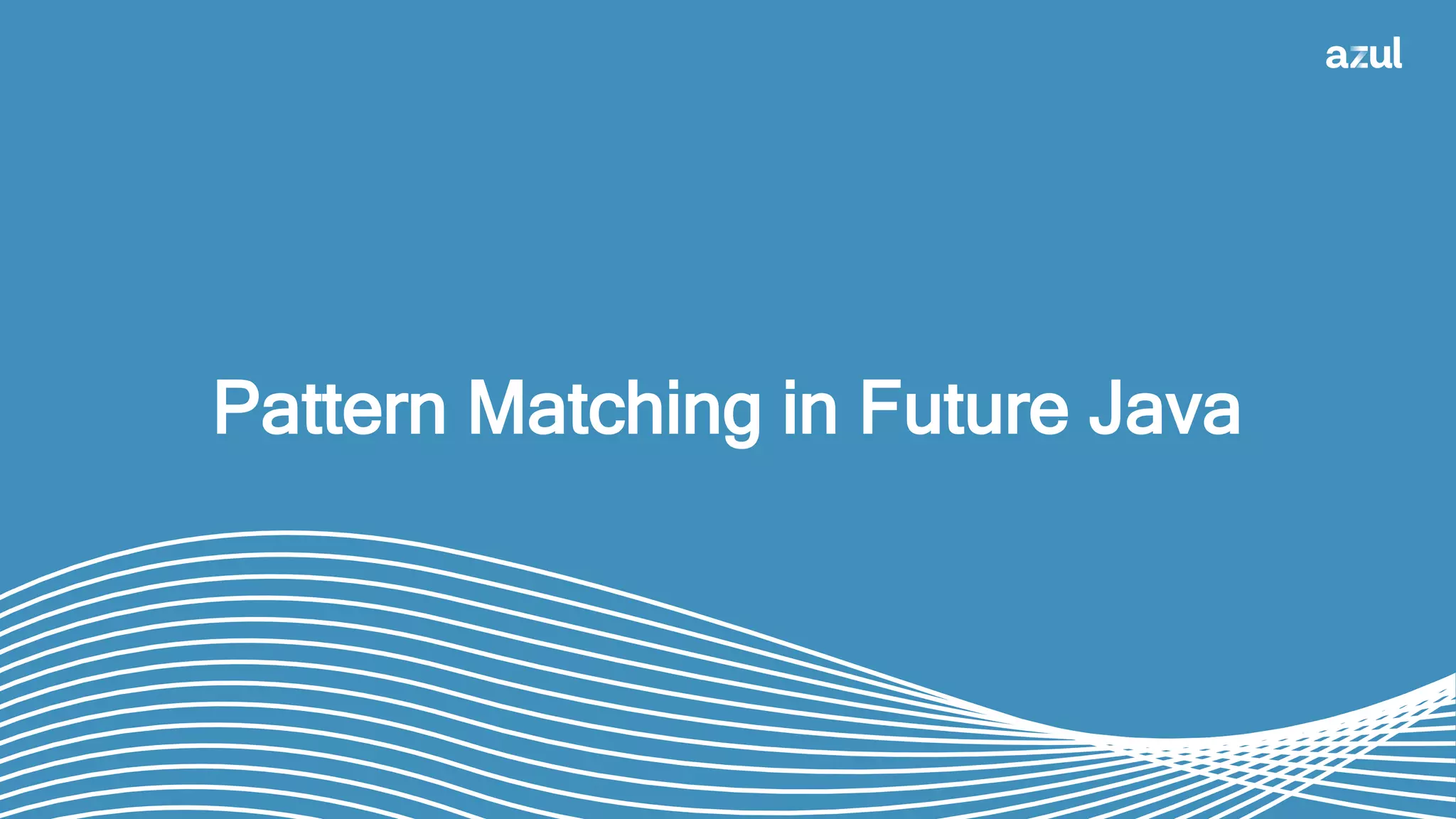
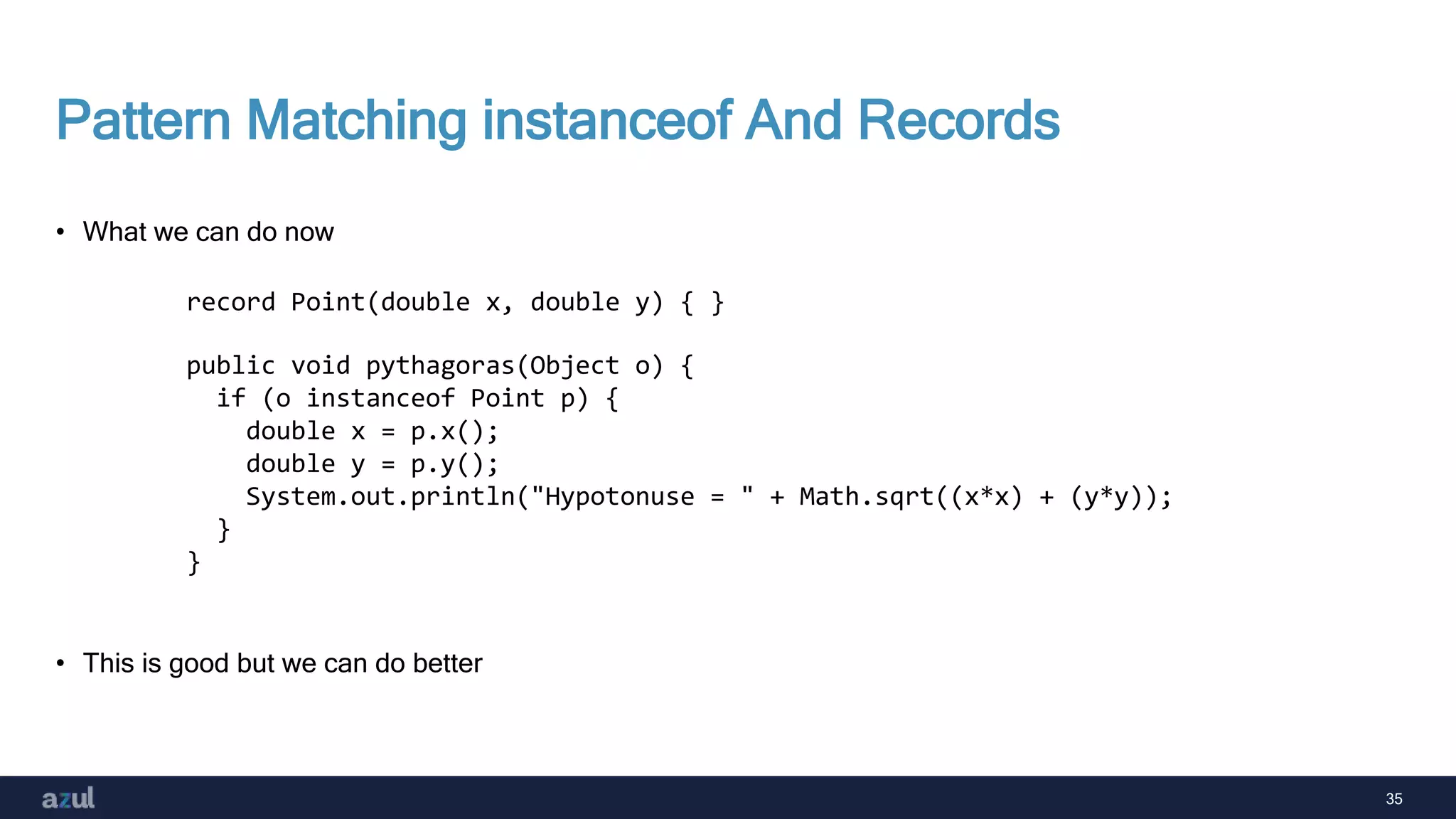
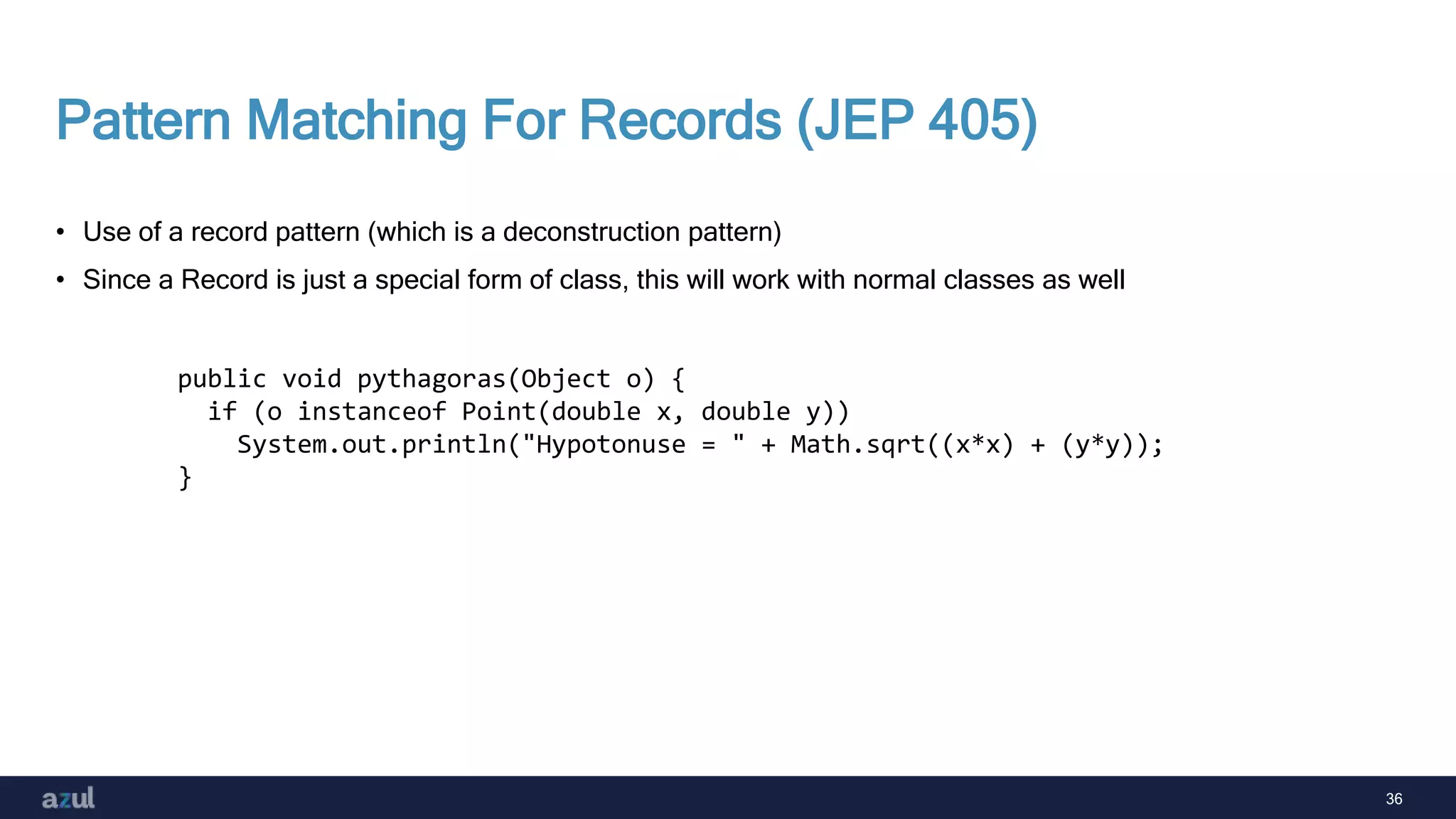
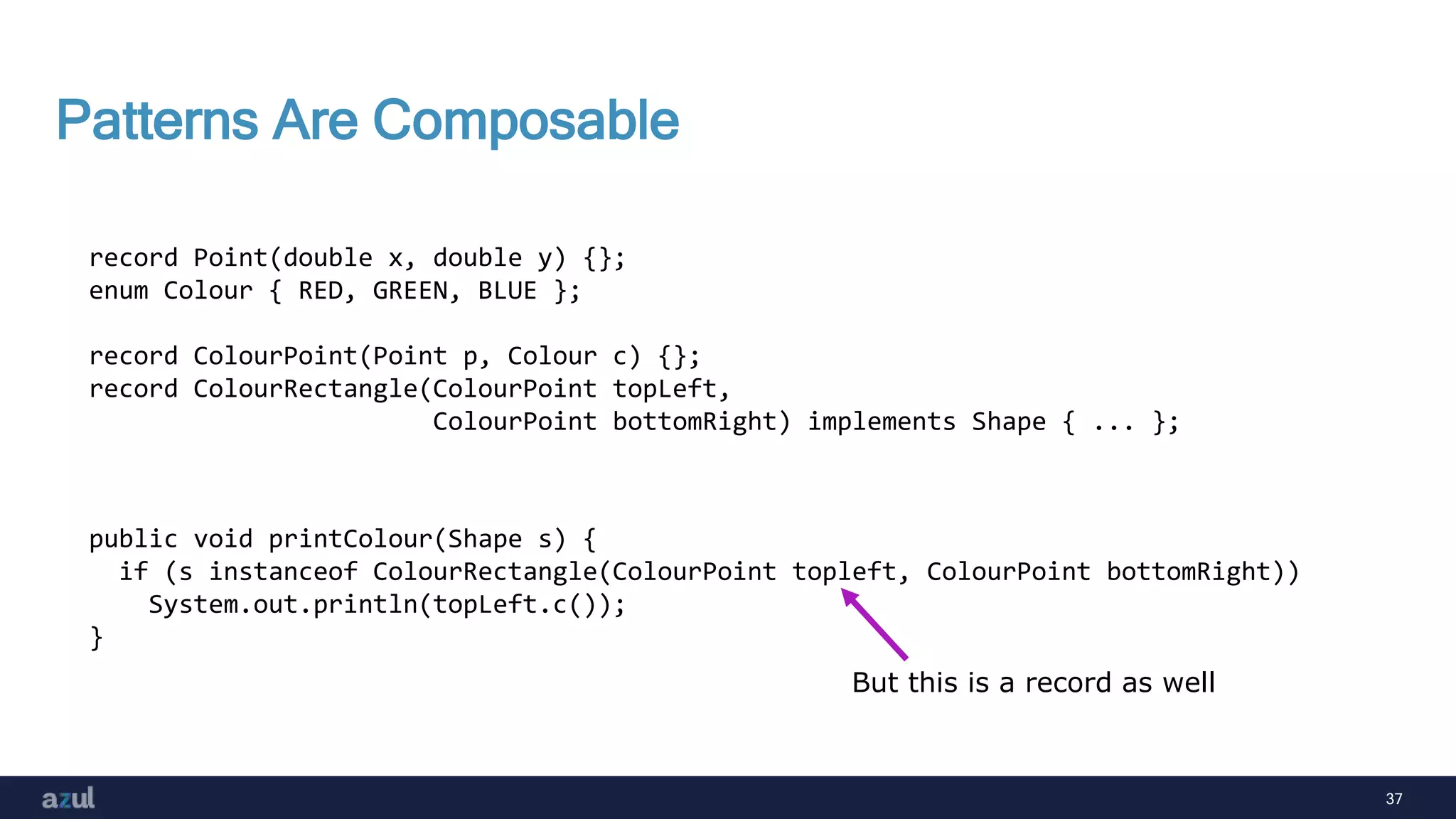
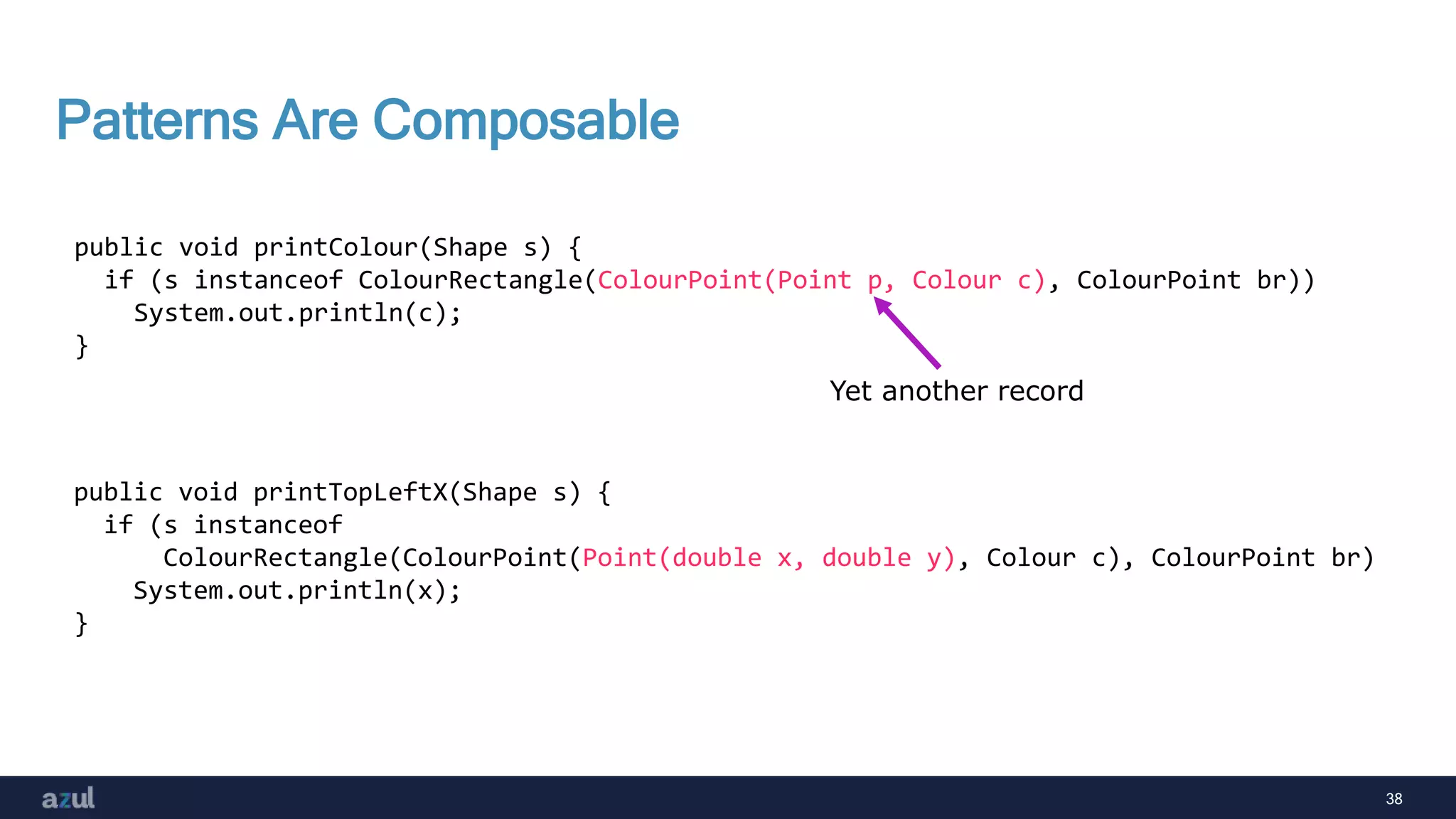
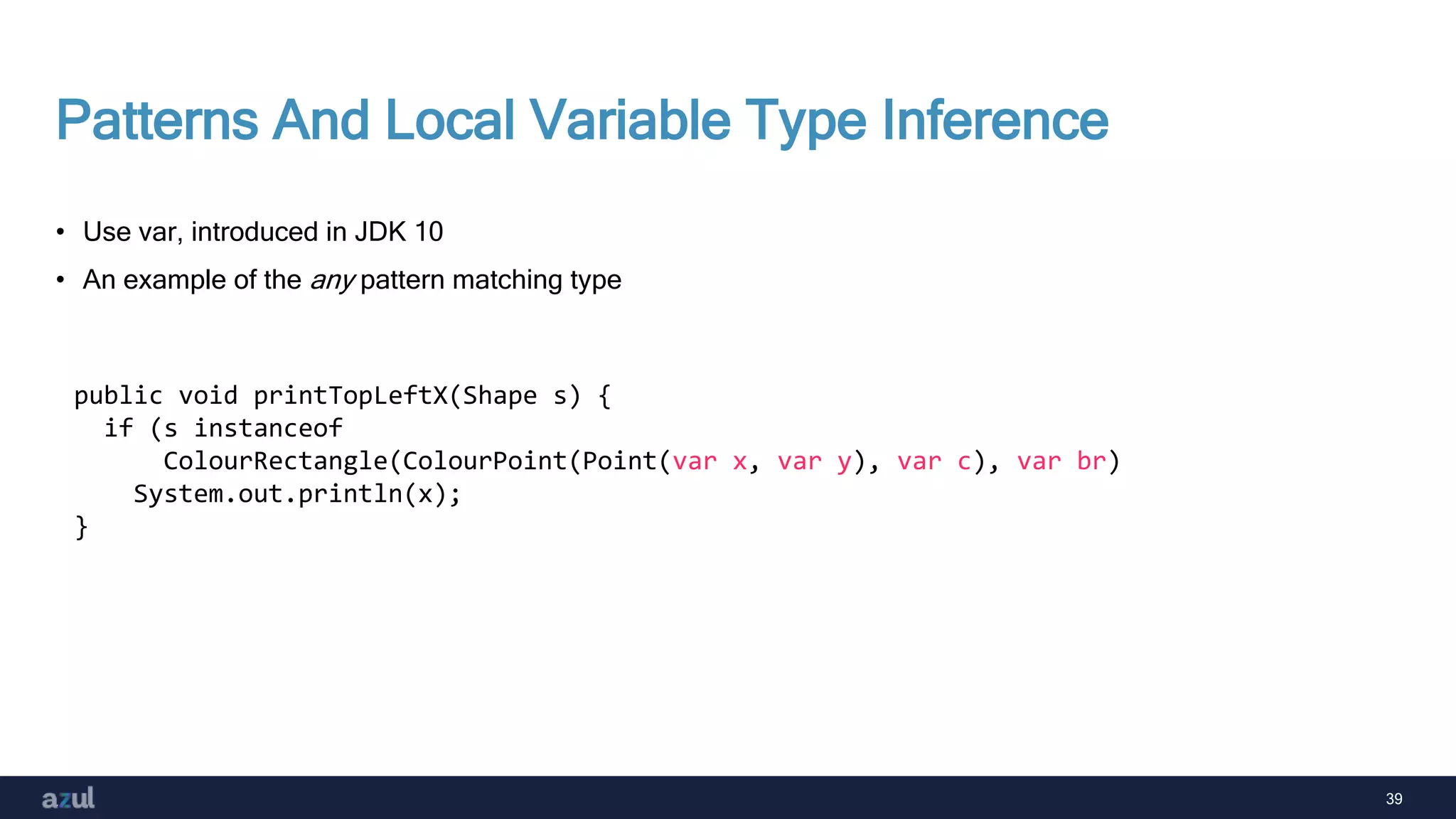
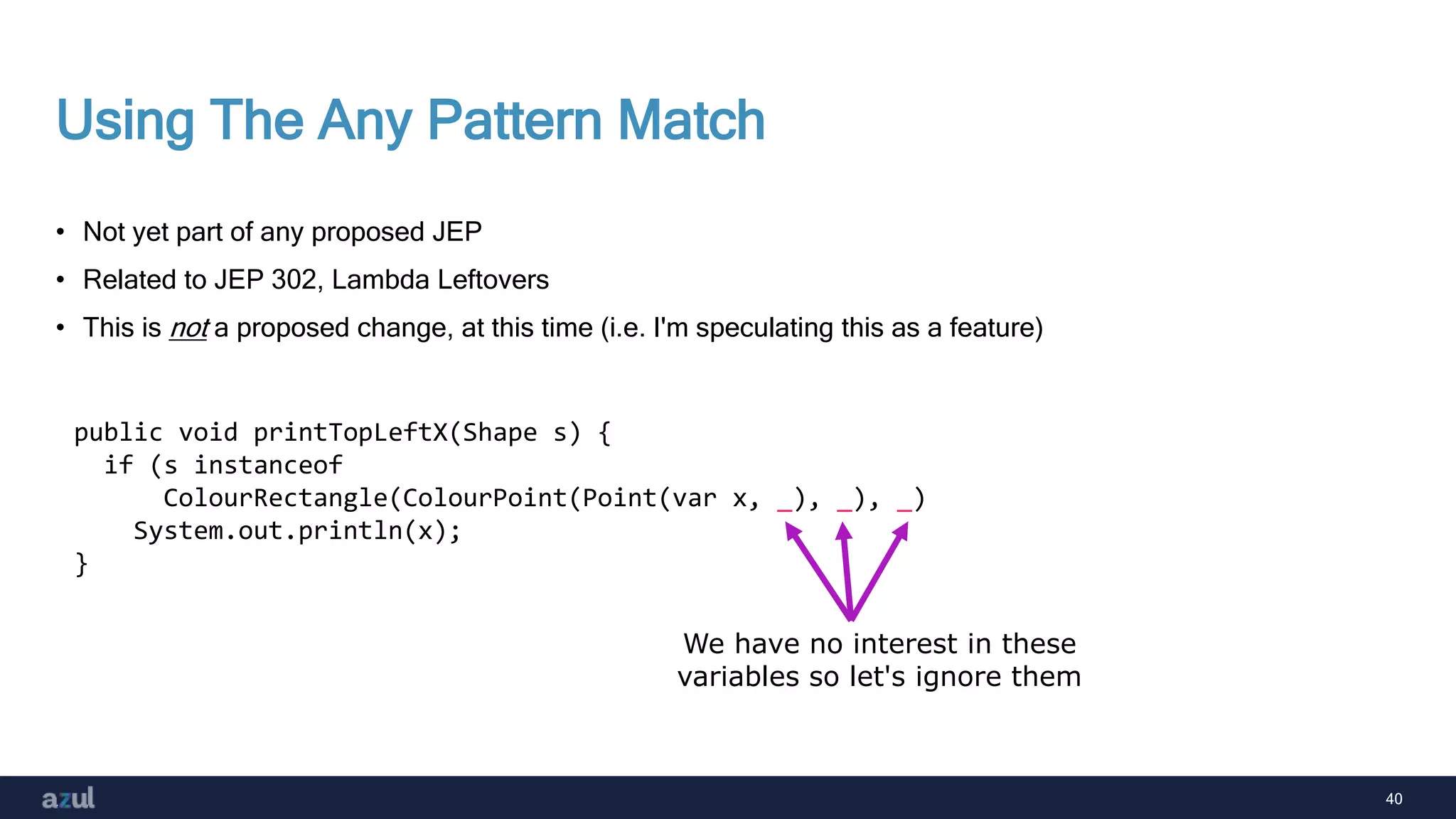
![41
Pattern Matching For Arrays
• Why not use a decompose pattern for arrays?
• This was part of JEP 405 but has been dropped for now
static void printFirstTwoStrings(Object o) {
if (o instanceof String[] sa && sa.length >= 2) {
String s1 = sa[0];
String s2 = sa[1];
System.out.println(s1 + s2);
}
}
static void printFirstTwoStrings(Object o) {
if (o instanceof String[] { String s1, String s2, ... })
System.out.println(s1 + s2);
}](https://image.slidesharecdn.com/patternsinjava-220425143332/75/The-Art-of-Java-Type-Patterns-39-2048.jpg)

